GREAT MUSIC GREAT MEMORIES
with the





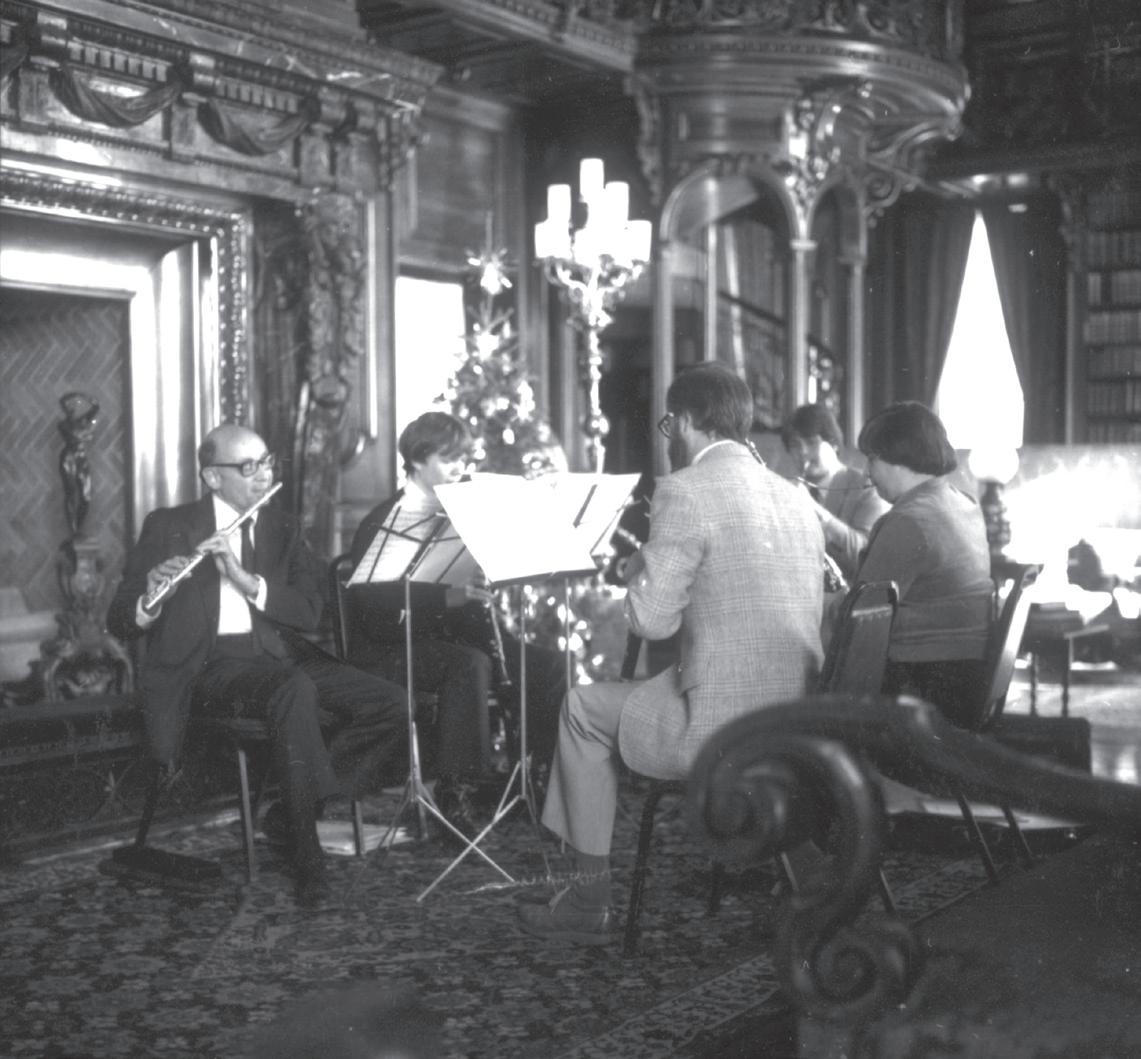
GREAT MUSIC GREAT MEMORIES 50 Years 1960-2010 with the Asheville Symphony
Copyright © 2010 Asheville Symphony Society, Inc.
Asheville Symphony P.O. Box 2852, Asheville, NC 28802 828.254.7046 www.ashevillesymphony.org
Great Music, Great Memories is an apt title for this book which celebrates the 50th anniversary of the Asheville Symphony. It helps us remember that music is first and foremost what we’re all about. Thanks to the orchestra and its talented musicians, we are proud to bring live symphonic music to our community.
An equally apt title might have been “Great People Make a Great Symphony.” This book describes the energetic, committed, tireless and talented people who created, sustained and continue to enrich the Symphony, not only over the 50 years since the first subscription season but also stretching back to 1927. We can rightly claim to be one of North Carolina’s oldest orchestras.
On behalf of the Board of Directors, I would like to extend my thanks to some of those “Great People” who made this book possible:
J.K. MacKendrie (Mack) Day’s thought-provoking essay entitled “A Love Song—Its Role: Is It Worth The Effort” presented before the Pen and Plate Club on July 21, 1983, was the inspirational starting point for Arnold’s Wengrow’s research on this book. The Archives Team —Chloe Atkins, Beverly Briedis, Carole Roskind and Fran Sandfort—must be recognized for its outstanding work over the past one-and-a-half-years with the Symphony’s irreplaceable archival collections. These documents provided the exact historical materials necessary to produce this commemorative book and its companion DVD. Madelyn Bennett Edwards and Otis Philbrick are also to be saluted for co-producing the outstanding Anniversary DVD, enclosed herein, which distills the essence of the Symphony’s story, set to the music of our excellent orchestra.

My special thanks to my trusted teammate, Carole Roskind, for working side-by-side with me as we planned and developed on-going events celebrating our Golden Anniversary.

Finally, our thanks to Arnold Wengrow, who coordinated the research in addition to writing Great Music, Great Memories. He encouraged us to see the 50 years of the Asheville Symphony within the substantial musical and artistic history of our city and our region.
President,Great Music, Great Memories was produced for the Asheville Symphony’s 50th Anniversary under the direction of Carole Roskind and written and edited by Arnold Wengrow, with further editing by Carole Roskind and Jill Hurd. It was proofed by Sally Keeney and Elisabeth Varner. Leslie Shaw of Leslie Shaw Design was the designer.
It would not have been possible without the support and assistance of the staff, musicians, ASO Board president, Carolyn Hubbard and the Board of Directors, volunteers of the Asheville Symphony and the members of the Asheville Symphony Guild. We acknowledge them with gratitude. We also are grateful to those below who shared their recollections, answered questions, offered advice, supplied photographs and provided expertise. Many people helped during this two-year project, and we apologize if we have omitted any names.
Larry Adamson, Linda Alford, Susan Arnold, Catherine Arps, Chloe Atkins, Robert Hart Baker, Jane Beebe, David Beebe, George Bilbrey, Tom Bolton, John Bridges, Beverly Briedis, Michael Brubaker, Ron Clearfield, Carolyn Ray Cort, the Reverend Patricia Harris Curtis, Mary Byrd Daniels, J.K. MacKendree Day, Joyce Dorr, Madelyn Bennett Edwards, Joyce Farwell, Rosemary Fischer, Cherylonda Fitzgerald, May Jo Denardo Gray, Ginny Hayes, Emmet Hayes, William Henigbaum, Susan Hensley, Jill Hurd, Patricia Koelling Johnston, C. Robert Jones, Franklin Keel, Doug Keen, Dick Kowal, Margery Kowal, Sydney vom Lehn, Carol McCollum, Margie Metz, Fred Meyer, Daniel Meyer, Rob Neufeld, Wendy Newman, Beverly Ohler, Marcia Onieal, Ruben Orengo, Otis Philbrick, Gloria Pincu, Randal Pride, Karl Quisenberry, Vance Reese, Bill Roskind, Frank Rutland, Diana Sanderson, Fran Sandfort, Jack Sherman, Robert Sorton, Marty Stickle, Irene Stoll, Dewitt Tipton, Hobart Whitman.
We are grateful to the following organizations and individuals who have provided invaluable assistance.
Asheville Citizen-Times (Holly McKenzie, Phil Fernandez) , Asheville School (Diana Sanderson, Glenn Mayes), Asheville Symphony Staff (Steven Hageman, Sally Keeney, Michael Morel, Elisabeth Varner),The Biltmore Company ( Dini Pickering, Jill Hawkins, Kathleen Mosher, Erica Walker) , Brevard College Library (Mike McCabe, Director of the Library), Charlotte Symphony (Tanya Davis, Director of Artistic Planning), Converse College (Wade Woodward, Director of the Mickel Library), James Madison University (Brian Cockburn, Head of Music Library; Jeffrey Showell, Director, School of Music), LaGuardia High School of Music & Art and Performing Arts (Samson Lin, Administrative Assistant, Pack Memorial Library (Zoe Rhine, North Carolina Collection), Spartanburg Herald-Journal (Tom Priddy), University of Illinois Library (Ryan A. Ross, Lincoln and Illinois History Collection), University of North Carolina at Asheville, Ramsey Library,( Anita White-Carter, Helen Wykle).
We are grateful to the Asheville Citizen-Times, the Biltmore Company, the North Carolina Collection of Pack Memorial Library and the University of Illinois Library Lincoln and Illinois History Collection for permission to reprint photographs from their archives.
Arnold Wengrow is a theatre director and writer who covers arts and travel from his home in Asheville. He specializes in writing about contemporary theatre design and is a contributing editor of Theatre Design and Technology, the Journal of the United States Institute for Theatre Technology. He wrote the catalog essay for Mostly British: Scene and Costume Design of the 20th Century: Tobin Collection of Theatre Arts at the McNay Art Museum in San Antonio, Texas, in 2002 and was guest curator and catalog author for Observe and Show: The Theatre Art of Michael Annals at the Theatre Museum of the Victoria & Albert Museum in London in 2003. He was founding artistic director of the theatre program at the University of North Carolina at Asheville in 1970 and retired as professor emeritus of drama in 1998. His articles have appeared in Entertainment Design, U.S. Airways Magazine, British Heritage, and The Spectator. He has written frequently about the arts for the Asheville Citizen-Times
Foreword from the President of the Asheville Symphony Board of Directors 1
Acknowledgements 2
Great Music Great Memories 5 - 11
Onstage . . . . . . . . . . . . . . . . . . . . . . . . . . . . . . . . . . . . . . . . . . . . . . . . 13 - 20
Conversations with Conductors: Part I - Robert Hart Baker . . . . . . . . . . . . . . . . . 21 - 26
Conversations with Conductors: Part II - Daniel Meyer . . . . . . . . . . . . . . . . . . . 27 - 31
Gallery of Photos 32 - 33
Backstage 35 - 38
Photo Scrapbook: Robert Hart Baker 39
Out Front 41 - 47
Asheville Symphony: A Timeline . . . . . . . . . . . . . . . . . . . . . . . . . . . . . . . . . 48 - 62
Conductors, Concertmasters & Managers Through the Years . . . . . . . . . . . . . . . . . . 64
Presidents of the Asheville Symphony Board of Directors . . . . . . . . . . . . . . . . . . . . 65
Presidents of the Asheville Symphony Guild 65
City of Asheville Proclamation of 2010 -2011 as “Asheville Symphony Year” 66
Great Music
Great Memories
 Photo courtesy of Asheville Citizen-Times
Photo courtesy of Asheville Citizen-Times
Our brains are musically wired.
Music, like Proust’s madeleine dipped in tea, can bring sights, sounds, ideas and emotions flooding back. It’s one of our most potent keys to memory.
Neurorologists and psychologists have even proved this scientifically. Oliver Sacks, the eminent neurologist and author of Awakenings and The Man Who Mistook His Wife for A Hat, says music and memory are deeply connected at the brain level. His 2007 book Musicophilia: Tales of Music and the Brain describes cases of people with devastating memory loss who are revitalized by melody and harmony.
Sacks became interested in music and memory, he told NPR’s Ira Flatow, when he saw “people who couldn’t take a step but who could dance, people who couldn’t talk, but could sing. Music somehow seemed to give them a flow they couldn’t initiate for themselves.” He was struck that people who had lost the powers of thought and language, “might recognize music, might sing along, might suddenly become lucid when they were exposed to music.”
“We are,” Sacks says, “a musical species, no less than a language species.”
Researchers have long studied the association of music and memory. Norman M. Weinberger at the Center for the Neurobiology of Learning and Memory at the University of California, Irvine, looked at some of this research in a 1995 article he titled “Threads of Music in the Tapestry of Memory.” His conclusion? Music that accompanies conscious learning “enters into memory for the material learned. Moreover, recall is better when the music present during learning is also present during recall.”
Psychologists Martin Conway and Catriona Morrison at the University of Leeds in England say music stimulates the release of dopamine, the neurotransmitter often called the brain’s “pleasure chemical.” “We’re better able to record memories when we’re in a positive frame of mind,” Morrison told Elizabeth Devita-Raeburn, a writer for the magazine More
So with all that science to back up what we probably already knew, we asked people who have known the Asheville Symphony from three perspectives – backstage, onstage and from out in the house, from the beginning to the present – to recall the great music and their great memories.
Asheville’s Symphony has a long genealogy.
The Asheville Symphony dates its 50th anniversary from its first subscription season in 1961-62. But Asheville can trace its symphonic aspirations back to 1927, when Lamar Stringfield, a 30-year-old Juilliard-trained flutist and conductor, formed what he called the Asheville Symphony Orchestra. He gathered a group of 24 Western North Carolina musicians for a summer afternoon concert of Beethoven, Schubert and Liszt on June 5 at the Plaza Theatre on Pack Square, now the site of Pack Place.
Born in Raleigh, Stringfield attended Mars Hill College and was already on his way to an important national career as a conductor and composer. He was awarded a traveling fellowship in 1928 by the Pulitzer Prize jury for a promising composition based on Appalachian folk tunes, From the Southern Mountains Suite
Stringfield had high ambitions for his Asheville Symphony. “I had a wild dream of an orchestra for Asheville, North Carolina,” he told a friend. After two more summer concerts, he envisioned a state-wide audience and went to Raleigh to ask Governor O. Max Gardner for a subsidy. But the Depression thwarted Stringfield’s plans, and he left Asheville for Chapel Hill and a position at the University of North Carolina.

There, in 1932, he became the founding conductor of the North Carolina Symphony, funded by the Works Progress Administration, the Depression-era federal program to put the unemployed to work. Eventually the State of North Carolina supported it as well.
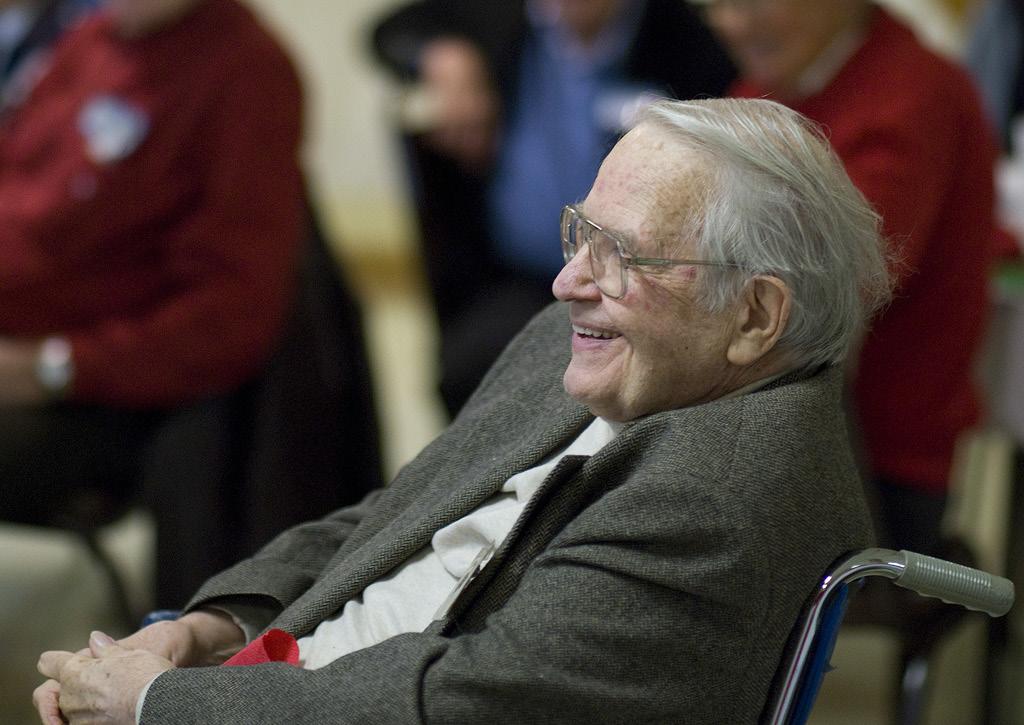
If it had not been for Lamar Stringfield’s first Asheville Symphony, the North Carolina Symphony might not have come into existence when it did. Stringfield kept his ties to Asheville, retired here and continued to compose and perform until his death in 1959. He is buried in Riverside Cemetery.
One of Stringfield’s musical colleagues in Asheville, Joseph DeNardo, the longtime director of music for the Asheville City Schools, kept the area’s symphonic aspirations alive with a community orchestra. (DeNardo had taught Stringfield to play the flute when they served together in France in World War I.) DeNardo began his orchestra in 1932 as part of the same Federal Music Project that started the North Carolina Symphony. There were strong ties between the two groups; the Asheville orchestra was considered almost a branch of the North Carolina Symphony. By 1938, what was then called the Asheville Civic Orchestra was playing concerts with 42 musicians at Lee Edwards High School (now Asheville High), David Millard Junior High and the City Auditorium. It continued until at least 1950.
North Carolina’s oldest symphonies, the Charlotte Symphony and the North Carolina Symphony, were both founded in 1932. Winston-Salem began its symphony in 1946; Fayetteville and Greensboro founded theirs in 1956. Today’s Asheville Symphony, incorporated in 1958, is the fifth oldest full-season orchestra in North Carolina and one of the state’s senior musical organizations.
John Bridges, one of the keepers of Asheville’s cultural memory, was present at the creation of the Asheville Symphony, as well as many of our other long-running performing arts groups, including the Asheville Community Theatre, Asheville Bravo Concerts and the Asheville Chamber Music Society. A classical singer, actor and librarian, he grew up in Asheville and for a time managed the Steinway Concert Hall in New York. He wrote the program notes for the Symphony’s first subscription concert in 1961.
John recalls that in the mid-1950s a group of musicians, many of whom had played with the Asheville Civic Orchestra, began meeting to play symphonic music in the fellowship hall of the First Presbyterian Church. One of the instigators of the gatherings was Jane McIntire, a contralto soloist in the First Presbyterian choir, who worked as the parts manager for Hayes & Hopson Auto Supplies on Pack Square.
In the fall of 1955, Jane appears to have invited a newly arrived music teacher at the Asheville School to conduct the group. Sol B. Cohen, 64, was an Illinois native who had studied violin and composition in Europe before serving in World War I. After the war he settled in Los Angeles, where he wrote and arranged music for movies, played with the Los Angeles Philharmonic and the Hollywood Bowl Orchestra and conducted for modern dance pioneers Ruth St. Denis and Ted Shawn. He then had a long career teaching music at a variety of public and private schools, including the Interlochen National Music Camp.

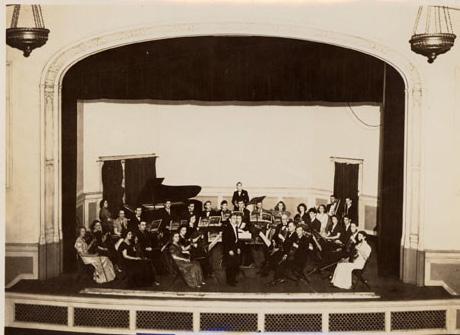
How did Asheville come to have its Symphony?John Bridges Photo by Roger Bargainnier Joseph DeNardo conducting the Asheville Civic Orchestra, City Auditorium, 1938 Courtesy North Carolina Collection, Pack Memorial Library Jane McIntire
For the next three years, until shortly before he left for the Roosevelt School in Stamford, Connecticut, Cohen served as first conductor for what he and Jane called the Asheville “Little Symphony.” Cohen’s diaries, now in the Illinois History and Lincoln Collections of the University of Illinois at Urbana-Champaign, give behind-the-scenes glimpses into those early years. They show that Asheville’s musical community and its leaders, including Joe DeNardo, were quick to recognize and embrace new artists of high caliber.
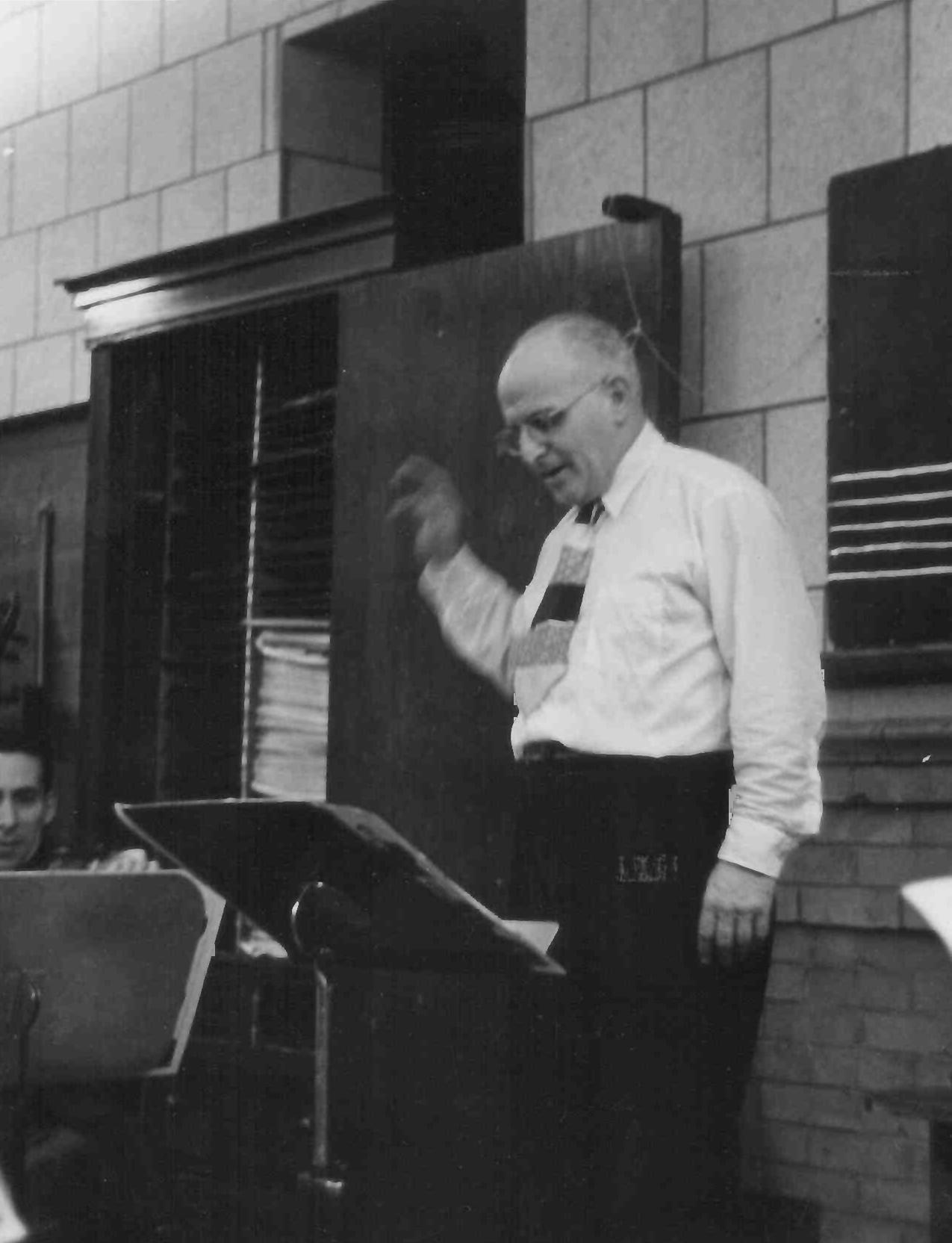
On Monday, October 31, 1955, Sol Cohen wrote above the printed date in the little “page a day” diary he used, “1st Orchestra Rehearsal! “ He knew something important was starting for Asheville. “This was indeed a triumphant day! “ he continued. “I went to the Presbyterian Church, where 20 of the orchestra players gathered for a rehearsal.” The group was preparing for a Christmas performance of Handel’s DeNardo had sent a group of his Asheville High band members to play with the older musicians. Cohen called them “wonderful high school boys” and soon added his own Asheville School students to the group. “It was a tremendously successful evening,” Cohen noted. Jane McIntire told him, “For the first time in years we have an orchestra in Asheville!” Other players thanked him as well. “A wonderful beginning!” Cohen concluded.
The next day Cohen went into town to buy music scores and stopped by to talk to Jane about a name for the group. Jane wanted to call it the “Little Symphony,” a popular name at the time for community orchestras. Cohen preferred the “Little Symphony Orchestra.” Jane prevailed.
For the Little Symphony’s second rehearsal the following Monday, the ensemble had grown to 25 players. It was “as lively a group as I have ever had,” Cohen noted. “The ‘old timers’ and the HS boys all combined to make scintillating music,” he wrote. “May Jo and her mother were a great help.” May Jo and her mother were May Jo and Tommsie DeNardo, Joe DeNardo’s daughter and wife, both violinists. At the next rehearsal, Cohen had “three trombone players and a brace of trumpeters that would have overthrown the gates of Jericho!”
Others in that early group were cellist Joan Day Beebe, a teacher at Allen High School, the private academy for African American girls; Agnes K. Whitman, a violinist and teacher at Mars Hill College; and Frank Rutland, an ardent amateur violinist who came to Asheville in 1956 to begin his career as a research engineer with American Enka. In 1958 Joan Beebe, Agnes Whitman and Frank Rutland became the incorporators of the present Asheville Symphony.
Of the founding mothers and fathers, Jane McIntire, Sol Cohen, Joan Beebe and Agnes Whitman are deceased. Frank Rutland, who was the Symphony’s first concertmaster, and David Beebe, Joan’s husband, remember those early years with great affection. Others who have recalled that time include Larry Adamson, who started playing French horn for the Symphony in 1960 when he joined the Warren Wilson College faculty to teach biology; Hobart Whitman, Agnes’s son, a French horn player; May Jo DeNardo Gray; Sydney vom Lehn, a violinist who was the Symphony’s second concertmaster; and two high school violin students at the time, Carolyn Ray, now Carolyn Ray Cort of Burnsville, and Mary Byrd Daniels, who also became a concertmaster of the Symphony. Mary Daniels still plays with the Symphony today, more than 50 years later.

By Fall 1958, the group decided it was time to become official. Jane McIntire had died unexpectedly, so the impetus may have come from Joan Beebe, who had administrative talents and later served as the dean of Warren Wilson College. She and Agnes would have realized that to stabilize, grow, raise funds and eventually hire a conductor, musicians and staff, they should incorporate as a nonprofit organization. “They needed to move on and do larger work,” David recalls. They asked William C. Moore of Patla, Straus, Robinson & Moore to draw up the documents for what they named the Asheville Little Symphony. Joan Beebe, Agnes Whitman and Frank Rutland signed.

The Asheville Symphony that emerged in 1958 had a long genealogy of classical musicians and music lovers, both in Asheville and Western North Carolina. The musicians and their audiences were a small but cosmopolitan community. Many of the musicians were conservatory trained. Some had come from Europe. They all knew each other. They played together. They saw each other at concerts.
From his position as band and choral director at Asheville High School, Joe Denardo was influential from the 1920s into the 1960s. Besides conducting the Asheville Civic Orchestra from 1932 until about 1950, he probably taught—or knew—every music student who came through the Asheville City Schools. In 1951, he conducted a high school chorus of 700 students for an audience of 3,000 at the City Auditorium when Roy Larsen, chairman of Time, Inc., came to present Asheville with its “All-American City” designation. Everyone who knew about in music in Asheville knew that Joe Denardo was a child prodigy in his native Italy and once played for Giuseppe Verdi.
Everyone interested in classical music also knew pianist and teacher Grace Potter Carroll, the second wife of Dr. Robert Carroll, the founder of Highland Hospital. She had studied with the famous European piano teacher Theodor Leschetitzky, who had taught Paderewski, and concertized there. Her husband built her a 1,500 square-foot music room with cherry walls at Homewood, their mansion in Montford. Here she held musical evenings, probably as early as the mid-1930s. It was here that Béla Bartók attended the only musical event of his stay in Asheville in 1943-44. And many of the Symphony’s early musicians, including Joan Beebe, Agnes Whitman, Hobart Whitman and Mary Byrd Daniels, were each invited to play at Homewood.
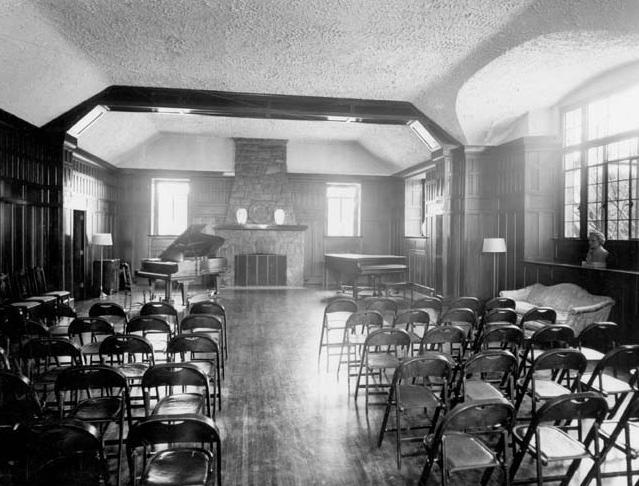
In nearby Brevard, the Transylvania Music Camp began in 1945. A summer music festival was added soon after. The camp and festival became the Brevard Music Center in 1955. Brevard, which also had an important music program at Brevard College, was an important destination for both the Asheville Symphony’s musicians and their audiences.
Since 1932, musical performances by visiting artists of international stature had been sponsored by the Asheville Community Concert Association (now Asheville Bravo Concerts). They certainly helped build an audience for classical music. The North Carolina Symphony was also a regular visitor. And the success of the recently formed Asheville Chamber Music Series must have encouraged Joan Beebe and Agnes Whitman that their new organization would find its place in the community. The Chamber Music Series began six years before the Symphony incorporated and had 800 subscribers for its first season. Joan and Agnes played music with the founder of the Chamber Music Series, Josef Vanderwart, a pianist and businessman who had escaped Nazi Germany.
Soon after the Symphony incorporated in September 1958, Sol Cohen began preparing his final concert with the Little Symphony for a live radio broadcast in November. On October 27, he notes in his diary that he asked Lamar Stringfield to conduct a portion of that evening’s rehearsal. Did Cohen or Stringfield recognize that they were taking Asheville’s orchestra full circle back to its beginning in 1927? Stringfield died the following January.
After the November broadcast, Cohen, perhaps anticipating that he would be leaving Asheville in the spring, turned the conductor’s position over to Richard Renfro of Western Carolina College in Cullowhee. He continued to play violin with the Symphony. After a rehearsal in February, he wrote, “I can see the old order vanishing into—absorbed into—The New. There are more players, there is more discipline, a new technical skill is developing. That the old ‘spirit’ is lacking is, I suppose, not important. Music—good music—is being played. Dr. Renfro is really doing fine work.”
The old order would become further absorbed into the new later that year. Sometime in 1959 Joan and David Beebe were introduced to Helen and John Sorton, who had moved from Charlotte that year. John was the new comptroller for the Celanese Corporation. (David was the comptroller of Warren Wilson College.) Both John and Helen had been active with the Oratorio Singers of Charlotte. John was an organist and singer; Helen, a graduate of the High School of Music and Art in New York City, was a pianist, string bass player and singer.
Helen attended a rehearsal of the Little Symphony at First Presbyterian Church. Larry Adamson recalls, “She gave us her background and her involvement in Charlotte,” and soon she was the newly-incorporated group’s manager. “I’m sure that Joan and Agnes were involved in offering the position to Helen,” Larry says.
Helen had formidable organizational skills, enormous energy and great personal flair. At the High School of Music and Art, her yearbook said,”Helen plays bass with a smile on her face.” She was runner-up to a future Miss America, Bess Myerson, as “prettiest person” in the school. Helen set about taking the group from a collection of musicians who played together to a fully-functioning orchestra. She drove a 1957 pink and white Chrysler Windsor with fins, the only car like it in town. Everyone knew when Helen Sorton was out on Symphony business.
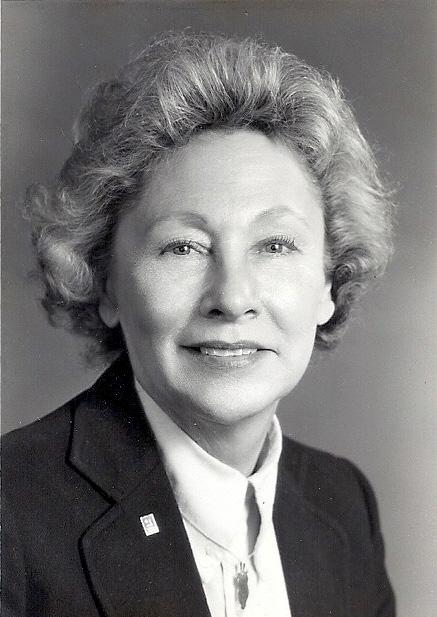
Robert Sorton, Helen and John’s son, was about eight years old at the time and remembers that “out of the blue” his mother became the Symphony’s manager and sole employee. As a young man Robert studied oboe. When he was 13, he left Asheville for the newly-opened North Carolina School of the Arts in Winston-Salem but returned to play with the Asheville Symphony as second and then principal oboe from age 14 until 1974, when he finished graduate school.
As an accountant, John Sorton took care of the Symphony books and made sure the organization stayed solvent. “My mother was pushing music stands around, calling people in New York, contracting musicians and finding conductors,” says Robert, now professor of oboe at Ohio State University.
When she began, Helen’s goals for the new organization were first to get an on-going, part-time conductor and then to plan a subscription concert season. Before Helen joined the organization, the Asheville Little Symphony gave individual concerts under Richard Renfro’s direction. They performed a Sunday afternoon concert at William Randolph School auditorium with Richard Naff of the Mars Hill College music faculty as soloist for the Concerto No. 3 for horn and orchestra by Mozart. In December 1959 the Little Symphony accompanied a 100-voice chorus singing Handel’s The Messiah at the First Baptist Church. In March 1960 Renfro conducted a concert at Elizabeth Williams Chapel at Warren Wilson College, the group’s third out-of-town concert of the season.
By that summer or fall, however, Helen had found her conductor. He was M. Thomas Cousins, a member of the music faculty at Brevard College and a well-known composer of mostly choral and sacred music. Helen’s daughter, Carol, was studying music at Brevard, which may have cemented the connection. Cousins conducted his first public performance with the Little Symphony on December 4, 1960, with Bach’s Christmas Oratorio at Central Methodist Church.
The Little Symphony then played its first full concert under Cousins’ baton at Brevard’s Sims Campus Center Auditorium on Monday, May 1, 1961. The ambitious program included Mozart’s Overture to The Magic Flute, Haydn’s Symphony in D, No. 104, Handel’s Prelude and Fugue in D Minor, Valse Triste by Sibelius and the Emperor Waltzes by Strauss. A note on the program said, “We would like to express our appreciation to the Little Symphony for coming to our campus for this concert. We congratulate them on their proposed plan for expansion for 1961-62. You are invited to share in the expenses of this concert and to assure the future work of the orchestra by placing a contribution in the plates provided in the foyer.”

For the first subscription season, Helen scheduled four concerts from October 1961 to May 1962 in the auditorium of David Millard Junior High School, at Oak and College streets, across from the First Baptist Church. Season tickets were $5.00 regular, $2.50 for students and were on sale at Ivey’s, a major downtown department store (now the site of the Haywood Park Hotel). Individual concert tickets were $1.50 regular, 75 cents for students.

David Millard was one of Asheville’s most venerable buildings. It was built in 1916 as Asheville High, with an intimate auditorium seating about 750 on the main floor and a balcony. The auditorium was already the home of the Asheville Chamber Music Series. Most importantly, the auditorium’s abundant use of wood and its plaster walls painted with calcimine gave the hall lively acoustics. It would be the Asheville Symphony’s home for the next seven years.
Another one of Helen’s early goals seems to have been getting “Little” out of the Symphony’s name. There was nothing little about her ambitions for the orchestra. The program of the first concert in 1961 quietly dropped the diminutive. In 1963, the name was officially changed to the Asheville Symphony Society, Inc. Its purpose was “to form, develop, promote and operate an orchestra and related choral groups and to present public concerts, recitals and musical programs . . . in and outside the City of Asheville, North Carolina.” It would “foster, encourage and advance an appreciation of music . . . and promote public education in . . . classical music . . .” It would provide “an opportunity for students and musicians of promise to participate and gain experience in symphony orchestra playing.”
Program for first concert of first subscription season, October 17, 1961

It wasn’t long before Helen was attracting prominent members of the community to the Board of Directors. There were nine directors for the second season. There were 15 by the third season, including Weldon Weir, the powerful Asheville City Manager. And Helen had moved her office from her home on Brookwood Road to Room 311 in City Hall.
Helen was savvy enough to include not just the politically and socially well-connected but people with real musical knowledge. Joe DeNardo and Grace Potter Carroll were on the board by the third season.
For its first subscription concert, Musical Director Thomas Cousins had about 50 musicians from Asheville and surrounding communities, including Murphy, Sylva and Burnsville. They opened with Brahms’ Academic Festival Overture. As John Bridges wrote in his program notes, it has a “thunderous rendition” of “Gaudeamus Igitur” at the end. The audience’s reaction was thunderous as well and would not stop until the full orchestra stood for a bow.
They continued with Schubert’s Symphony No. 8 in B Minor (The “Unfinished”). After intermission came Handel’s Suite for Orchestra (from “The Water Music”). The final selection was Rimsky-Korsakoff’s The Russian Easter Overture. After the conductor and orchestra acknowledged the audience’s applause, Cousins introduced Helen Sorton to receive her share of the credit for making the new venture happen.
It was probably not a coincidence that Thomas Cousins chose to open the first concert of the first season of the new Asheville Symphony
with the celebratory Academic Festival Overture. It was probably also not a coincidence that he chose to close this opening concert with an overture. The entire concert was the overture to all that was to follow.
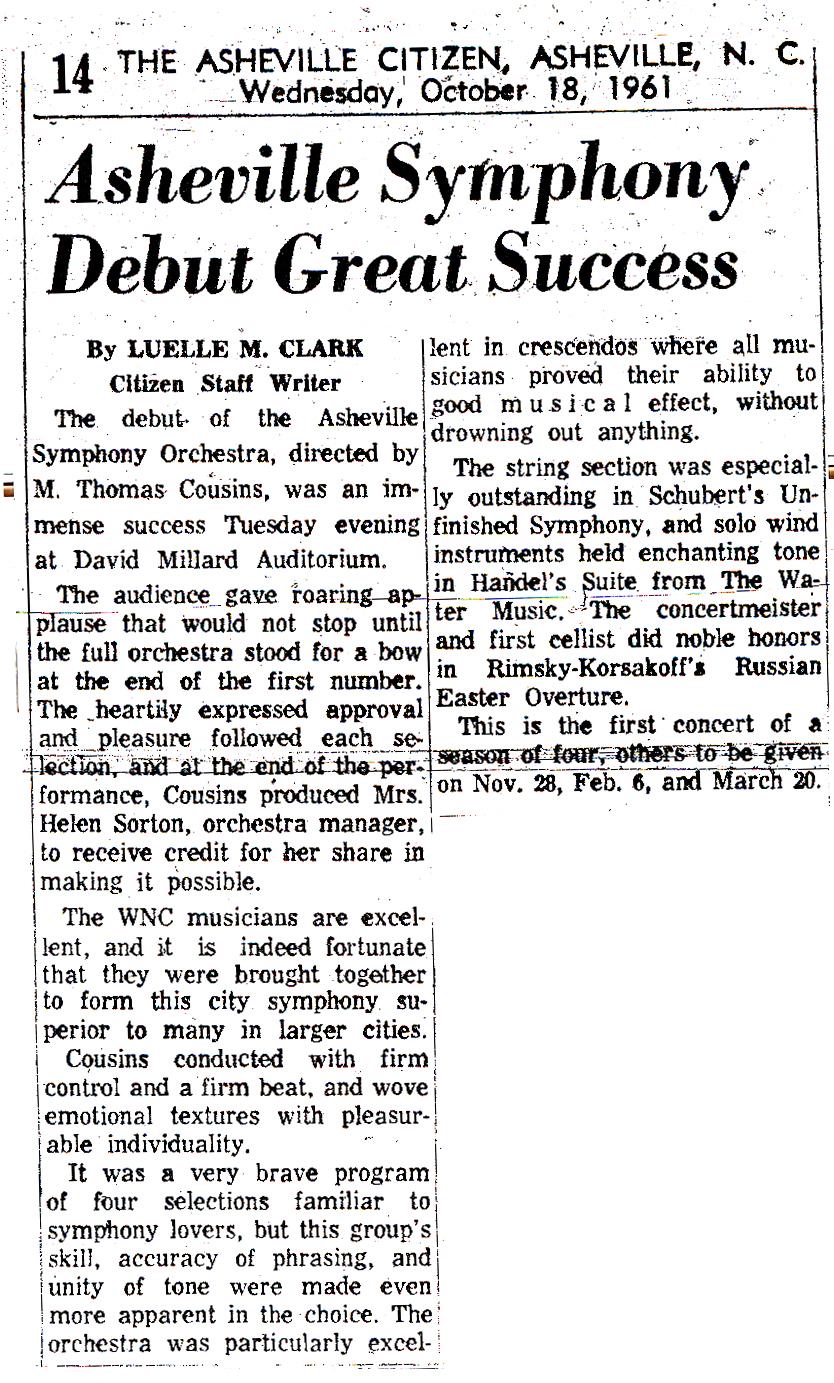
The concert started at 8:15 p.m. It was a short program, about 60 minutes of music. With an intermission, the evening was probably over by 9:30 p.m., time enough for Luelle Clark, a writer for the Asheville Citizen to travel the six or seven blocks from David Millard to the newspaper office and file her story before deadline.
She reported the next morning, “The debut of the Asheville Symphony Orchestra, directed by M. Thomas Cousins, was an immense success Tuesday evening at David Millard Auditorium . . . The WNC musicians are excellent, and it is indeed fortunate that they were brought together to form this city symphony superior to many in larger cities. Cousins conducted with firm control and a firm beat and wove emotional textures with pleasurable individuality. It was a brave program of four selections familiar to symphony lovers, but this group’s skill, accuracy of phrasing and unity of tone were made even more apparent in the choice. . . This is the first concert of a season of four, the others to be given on Nov. 28, Feb. 6, and March 20.”
The Asheville Symphony had begun.

Violinist Mary Byrd Daniels is the Symphony’s longest serving musician.
If violinist Mary Byrd Daniels were in a Broadway musical called Playing With the Asheville Symphony, she would be the show’s longest-running star. She is certainly one of the Symphony’s longest-serving musicians. She was 14 when her parents informed her she would join a group of seasoned musicians in a new symphony ensemble. That was in 1959, a year after the group incorporated as the Asheville Little Symphony. Mary played the Symphony’s first two seasons before graduating from high school in 1963. With time out for college, family and living away from Asheville, she has played with them ever since. And talk about long runs! She was the orchestra’s concertmaster, its “second-in-command,” for 25 years, 1982-2007.
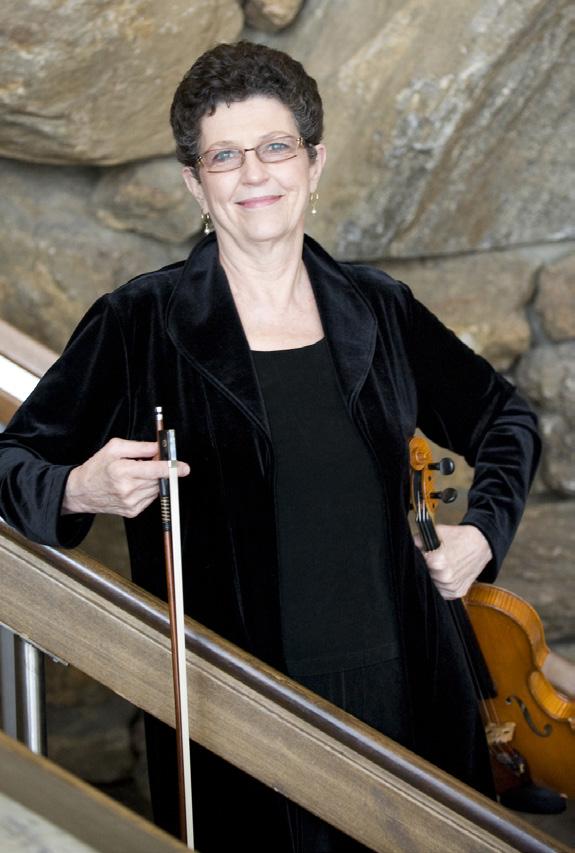
Mary wasn’t daunted by older musical colleagues when she was a teen, since she had begun playing when she was five. She went to music camp at the Brevard Music Center every summer starting when she was 12. “I can’t remember a time when a violin wasn’t in my hands,” she says. She studied with Elizabeth Krauss, a beloved Asheville violin teacher, who lived and taught on the top floor of the Daniels home on Charlotte Street. “She would knock her cane on the floor every morning at 6:30 and my father would say, ‘Granny Krauss is waiting for you,’” Mary recalls.
Like many of the Symphony’s musicians, Mary teaches private pupils and plays with other orchestras, in her case the Greenville Symphony and the Hendersonville Symphony. One of Mary’s fondest musical memories is the time that Edvard Tchivzhel, now the music director and conductor of the Greenville Symphony, was invited by Robert Hart Baker to conduct Tchaikovsky’s Symphony No. 4 with the Asheville Symphony in 1992. Tchivzhel had just defected from the Soviet Union with the help of Greenville friends after a 1991 United States tour conducting the State Russian Symphony Orchestra.
“I remember thinking this is not the most technically accomplished performance,” Mary says, “but I have never heard the orchestra be so electric.” The fourth movement ends with a rousing series of cadence chords. Mary remembers them at the bottom left side of the page in her score. “The audience was on their feet and yelling before those chords were finished,” she says. “It still gives me chills.”
That performance reverberates for Mary as a turning point for what the Symphony could accomplish. It showed her “what our orchestra could do,” she says, “how enthusiastic they could be and how the audience received it so well. None of our music making is any good unless it speaks to our audiences.”
Another vivid memory gives Mary chills, but for a different reason. That was the time during a dress rehearsal for Liszt’s symphonic poem Les Préludes when she accidentally tossed her bow off the stage out into the Thomas Wolfe Auditorium. She can still see the place in the score, where a very loose, rolling bowing is called for. “My bow hit my leg and took an enormous nose dive off the stage. It landed on the floor on its tip and then gently rolled over.”
To non-musicians, this might seem like a candidate for America’s Funniest Home Videos, but as Mary puts it, “Bows are exquisitely expensive.” Violinists seek out the most perfect bow they can afford, just as they do with vintage violins. Mary’s bow was made in the 18th century by Nicholas Lupot, known as the “French Stradivarius” and had been found for her by a friend in Montreal. “Violins and bows become such an intrinsic part of our bodies,” Mary says, “that you feel horrified if you’ve done damage to it. It’s as if you’ve done damage to yourself.”
Somebody out front picked the bow up and handed it back to Mary, but, she says, “For the next 30 minutes I was frozen; I wanted to cry. Bob just kept going, as if nothing had happened.” She used the Lupot bow for almost her entire tenure as concertmaster. Now she saves it for very special occasions.
In sports, business and music, it takes teamwork.
It’s more than a fun fluke of language that orchestra musicians and the members of a basketball team are called players. Could there be a game needing more intricate teamwork, individual skill and high-energy in a tight timeframe than a symphony performance? Is there any team sport more complicated than an orchestra?
Imagine almost 100 players covering some 20 different positions on the court at once. Our Symphony team is divided into five sub-teams (strings, woodwinds, brass, percussion and keyboard) and those sub-teams break into some 19 smaller miniteams (first violins, second violins, viola, cello, bass, etc). And each mini-team has a slightly different playbook!
Each player may not be fiddling, plucking, blowing, tooting or banging every moment, but each one is in play every second of the game. When the ball or the musical passage comes your way, you’ve got to be there to grab it. Every note from every player has to be on target and on time, every time. Think of 100 basketball players sinking 100 balls through 100 hoops at exactly the same moment, shot after shot after shot.
Sports and orchestras aren’t the only groups needing teamwork, of course. Peter Drucker, the father of modern management, often said that orchestras worked the way business teams should. “There are probably few orchestra conductors who could coax even one note out of a French horn,” Drucker wrote, “let alone show the horn player how to do it. But the conductor can focus the horn player’s skill and knowledge on the musicians’ joint performance. And this focus is what the leaders of an information-based business must be able to achieve.”
If executives draw management metaphors from orchestras, Asheville Symphony horn player Michael Brubaker takes his analogies for the musical team from the visual arts.
“A lot of music that we play in the Symphony,” he says, “is like a large landscape painting.” He cites a recent performance of Mahler’s Symphony No. 4. The piece, he says, “is filled with enormous images and incredible detail. When you are inside the music on stage, you recognize that the part you have is only one part of the details of the painting. What I remember is that I’m in charge of blue.”
Mike says that the members of the team don’t have the view of the game the fans do. “The musicians don’t hear what the audience hears,” he says. “It’s very noisy on stage, especially in the brass section. What we hear is just the palette or the brush we are painting with.”
Team members are not always aware of what their teammates are doing. “The brass section can sometimes be playing and not realize there is another instrument in the orchestra playing our same part,” he says. “There have been a number of times we’re playing with the cellos and I’m surprised they are playing. I can’t hear them.”
How does he know they’re playing? “Ah,” he says, “that’s what rehearsals are for.”
Mike takes another example from Mahler’s Fourth of how the orchestra team works. “Mahler doesn’t write for my instrument the way he does in the other symphonies,” he says, “where we are a large army of brass instruments.” Here, the solo horn has passages the other horns don’t have. These were played by Terry A. Roberts, the team leader for the horns, known as the principal player.
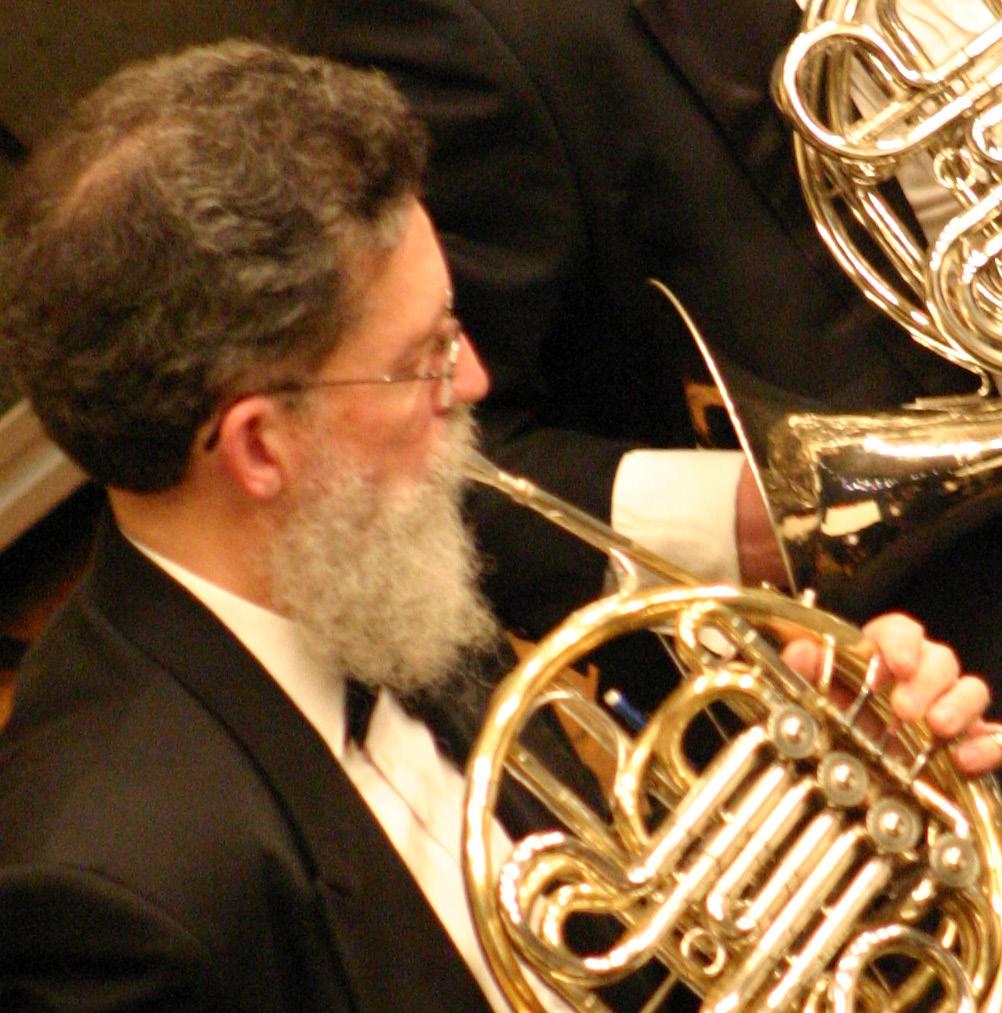
“Terry has insight into the music and into the performance that I thought was very exciting,” Mike says. “It was like watching a great actor work. Our excitement comes from listening to our colleagues play well. It’s a team effort. We are obviously being led by our music director, but we are constantly listening to the art that our colleagues are producing.”
Mike’s strongest memory of team spirit among musicians and audience was the performance of Beethoven’s Fifth Symphony in September 2001 after 9/11. “It was electrifying,” he says.
He notes that Beethoven was writing during an artistic and political period that was causing him a great deal of personal turmoil. “Music has a power to convey the complex emotions of a time,” he says, “and Robert Hart Baker was aware that this was a piece of music written about the aspirations of humanity. I remember the performance because it allowed the musicians on stage to make an emotional statement. We were equally attuned to the audience in our desire to keep faith in the goodness of mankind.”
Former board members Carole and Bill Roskind remember the occasion vividly as well. “There was a lot of discussion about whether or not to even go ahead with the concert because of the nationwide fear of terrorism,” Carole says. She recalls that at the very beginning of the evening, Robert Hart Baker asked the audience to stand and sing America the Beautiful.
The next morning, former Symphony president Joyce Dorr was moved to write a letter to the Asheville Citizen-Times. Last evening Asheville Symphony’s performance, she said, “dedicated to those thousands suffering from this week’s tragedy, was indeed a stunning musical projection of Beethoven’s own resolution: ‘I will grapple with Fate; it will not overcome me.’ Every beat of this music was symbolic of a universal heartbeat quickened by a determination to alleviate pain and suffering throughout the world without being overcome by the struggle.”
For Mike Brubaker, “the importance of an orchestra is the way we can connect to an audience beyond politics. Bob Baker dedicated the Beethoven performance to an event and made it more than just a concert, he made it a collective act of faith in humanity.”
Why auditions for the Asheville Symphony are anonymous.
No one knows the origin of the famous joke about how to get to Carnegie Hall. Early versions were sometimes attributed to violinist Jascha Heifetz and sometimes to pianist Artur Rubinstein. The answer (“practice, practice, practice”) is also true for the question, “How do you get to the Asheville Symphony?”
But practice isn’t enough. Even the best-trained and most practiced musicians have to audition. Vance Reese, co-principal string bass player since 2002, recalls his audition and reveals a surprising Wizard-of-Oz experience.

“I’ve been on both sides of the screen,” Vance says, referring to the way musicians and the panel of judges at the audition are hidden from each other.
The 2002 audition for principal bass was held in the Civic Center Banquet Hall, above the lobby of the Thomas Wolfe Auditorium. The players waited outside until Sally Keeney, the Symphony’s artistic administrator, ushered them in for their individual appointments.
“The player is instructed to say nothing to give himself or herself away,” Vance says, “and the conductor is the only one who speaks on the other side: ‘No 23, please start the first selection at rehearsal number 6.’”

The auditionees had been given a list of what Vance calls “particularly hard or famously tough excerpts from the orchestral literature.” In this case, the selections were from concertos by the 18th-century composer Karl Ditters von Dittersdorf and the 20th-century composer and Conductor Serge Koussevitzky.
Despite his PhD in music from Indiana University, Vance had to learn both pieces for the first time. “I had majored in organ, not bass,” he says, “so I didn’t learn some of the bass repertoire.” He studied bass starting in middle school in Oak Ridge, Tennessee. His teacher was the late Edgar Meyer Sr., director of the local schools system string orchestra (and father of the prominent bassist and composer Edgar Meyer). “He said if I studied bass, I would always assured of a job,” Vance says; “My first paying job was playing for The Mikado at the Clarence Brown Theatre in Knoxville. I was in 9th grade, before I could drive.”
One reason of course is to insure fairness to all the musicians, whether they are known or unknown to the conductor and other judges. Contending for the principal’s position were three local bass players from the Symphony, three from out of town and two others who occasionally played with the orchestra.
Another reason for the screen, Vance says, is to make the judges focus completely on the sound. “What they want to hear is whether a person can play out strongly and be a leader for the section. They want to hear the player’s dynamic and musical range.”
They can also tell if the musician is what Vance calls “a busy player, moaning, rustling, sighing.”
The audition lasted about 15 minutes. Vance expected to come in third after two fellow members of the Symphony he rated as better players. (He had been playing with them since 1999.) So he was surprised and pleased when he was asked to share the principal’s position with Lee Metcalfe.
French horn player Michael Brubaker recalls that for his 2000 audition he had an unusual level of anxiety. “I had just been recently bitten by a brown recluse spider,” he says,” and the back of my leg had an industrial level allergic reaction. I was on medication, and it was very difficult trying to concentrate on the audition.”
Both Vance Reese and Mike Brubaker had already been playing with the Symphony before their formal auditions. Sometimes the conductor will give a quick listen to a new player when he’s looking for a substitute or part-time player. “I played a Bach piece for Bob Baker after a rehearsal,” Vance remembers, “Bob was standing a couple of feet away. He was not terribly impressed as I recall. My bass needed some serious work at the time.”
Mike Brubaker says for the 10 or 15 minutes of intense concentration required by an audition, “we are polishing the music to a level that lets the committee hear that the performer is actually aware of the other parts. You have to convey the parts that are missing.”
Spider bites aren’t the only distractions Brubaker has had to deal with. He recalls a concert when he was suffering from a bout of poison ivy. “There is nothing much worse than being in white tie and tails and wanting to scratch during a very quiet passage of music,” he says.
For an audition in London for the principal horn position with a small Portuguese chamber orchestra, he made the mistake of trimming his moustache right before he played. “I had nipped my lip with the scissors,” he says, “and consequently was bleeding. I just kept playing with the blood running down.”
“Probably not,” he says. “In any case, they shouldn’t have scissors.”
Cellist Cherylonda Fitzgerald travels many roads to make her music.
Cellist Cherylonda Fitzgerald, one of the Symphony’s most recent additions, first began playing during the 2004-05 season. She and her husband had recently moved to Watauga, Tennessee, near Johnson City, where he teaches digital media at East Tennessee State University. Like all of the Symphony’s musicians, Cheryl goes to great lengths to practice her art. That includes traveling to teach at several locations and to rehearse and perform with multiple musical groups in different cities.

“Musicians have to piece together a career,” she says.
With a Master of Music degree from State University of New York at Stony Brook, Cheryl soon landed teaching positions at ETSU and nearby Milligan College. .She was introduced to the Asheville Symphony through former member Katie Hamilton, who was the previous cello instructor at Milligan. Cheryl’s first performance with the Symphony was shortly after Daniel Meyer’s audition concert. She later auditioned for him and has been playing with the Asheville Symphony ever since.
Besides teaching college students, Cheryl has her own studio with about 30 private students mostly from Kingsport and Johnson City. They range in age from five to “a doctor whom I’m not going to ask his age,” she says, with an infectious laugh that occurs frequently. “I even had a student who was 88,” she adds.
Her other orchestras are the Johnson City Symphony and the Symphony of the Mountains, which performs in Kingsport and other locations in Tennessee and Virginia. She is also a member of the Paramount Chamber Players, based in Bristol, and the Shelbridge Chamber Players, based in Johnson City.
How does she juggle three symphonies, a chamber ensemble, two colleges, 30 private students and five locations?
“I discovered Google Calendar and that saved my life,” she says with another laugh, and then adds, “It’s a very complicated schedule.”
Sally Keeney, the Symphony’s artistic administrator, says almost all of the musicians can tell a similar story. “I really can’t think of a musician who doesn’t play with at least one other orchestra,” she says.
There are about 15 other orchestras that share musicians and Sally knows most of them. The Symphony sets its schedule according to the availability of Daniel Meyer and the calendar of the Thomas Wolfe Auditorium. “This year we did work with the Hendersonville Symphony,” Sally says, “to adjust our Holiday Pops schedule so our musicians could play both.”
There are often conflicts with many of the other orchestras, Sally notes. “The musicians will usually go where the money is,” she says, “unless they have a titled chair. And with that, they will most likely go where the title is as it comes with some responsibility, especially a principal chair.”
Asheville’s third horn, for example, is principal in Greenville, so she goes with Greenville every time there is a conflict. When that happens, “It is my job to replace the absent musician with an approved substitute,” Sally says. “If I have run out of approved substitutes, I will call other personnel managers and ask for recommendations.”
Cheryl makes the 130-mile, one-and-a-half-hour round-trip journey between Watauga and Asheville for two to three rehearsals before the Friday night rehearsal and Saturday dress rehearsal and performance. “On Fridays I stay overnight with violinist Alice Keith Knowles, who lives in Black Mountain,” she says. “In addition to playing with the Asheville Symphony, Keithie is the principal second violinist of Symphony of the Mountains and plays with me as a member of the Paramount Chamber Players.”
Even in her short time with the Symphony, Cheryl has collected many memorable musical moments. “I started around the same time Daniel did,” she says. “I was impressed with his rapport with the audience. That is something that is becoming more and more important with conductors. It’s a way of personalizing classical music, so it is more approachable to the audience.”
She recalls two of the Symphony’s unusual collaborations: Asheville’s Red Herring Puppets accompanying Stravinsky’s Petrushka with giant puppets in May 2008 and Pittsburgh’s Attack Theatre performing a dance interpretation of de Falla’s El Amor Brujo in May 2009.

She also has a vivid memory of cello virtuoso Zuill Bailey’s first appearance in Asheville. “I really do think that he is going to succeed Yo-Yo Ma as the next ambassador of cello,” she says.


Bailey was performing Dvorak’s Cello Concerto, and Cathy’s fellow Symphony cellist, Franklin Keel, was preparing the same piece for a competition at Appalachian State University. She overheard Bailey offer to give him a coaching session during the orchestra’s break.
“Do you mind if I listen in?” Cheryl asked.
She invited herself to their private lesson?
“Sure!” she says, with a big laugh.
Franklin remembers the occasion as well. “My tendency, especially with a piece as difficult as Dvorak’s Cello Concerto,” he says, “is to overthink and overcomplicate the execution of the instrument. Zuill quickly spotted areas where I was overthinking and was very helpful in simplifying my approach, which helped to improve my sound.”
“It says a lot about Zuill’s personality to take the time to do that,” Cheryl says. “Not every artist will. I can see Yo-Yo Ma doing things like that.”
Almost every member of Catherine Arps’ family has played with the Asheville Symphony.
Catherine Arps has played viola with the Asheville Symphony almost every season since she moved to Western North Carolina in 1972. There were no auditions in the early years, Cathy recalls. All the musicians were volunteers, led by part-time conductors whose primary responsibility was teaching at local colleges. “If a section member moved to town and you could play, they wanted you,” she says.
Cathy and her husband live in Sylva, where they grow vegetables, flowers and herbs for local markets, restaurants and community subscribers. Like many of the musicians who live away from Asheville, she has traveled many miles getting to and from rehearsals and performances. “I was bringing two college students who couldn’t afford to travel. I was instrumental in getting musicians paid a little bit for travel, maybe a nickel a mile back then,” she says. To save gasoline costs, players try to car pool. “When the cars stop and musicians get out with their instruments, it’s like the circus and all the clowns getting out,” she says. “It’s part of the adventure.”
Weather can also be part of the adventure. “If it snows hard, the place where it gets impassable is Canton,” she says. She drives with her father, William Henigbaum, a Symphony violinist. “My dad, being an Iowa driver, doesn’t stop for a snowflake,” she says. She remembers an occasion when the Interstate was closed. “We got off, took the old road and managed to get there,” she says, but they couldn’t get home. “We slept on the floor at Pat Johnston’s,” Cathy says, referring to a fellow cellist.
Cathy’s entire family is musical and may hold the record for number of members playing with the Asheville Symphony. In Iowa, where she grew up, her mother played violin and viola and her father directed a chamber music series. “All the rehearsals were in our house,” she says, “and after my sisters and I were sent to bed, we would sneak back downstairs and listen to these fascinating people.”
Her mother, Mary Henigbaum, moved to Western North Carolina first and joined the Asheville Symphony. Her father also moved here, joined the Symphony and at 89 is still playing with them. “My dad is still teaching, still conducting an orchestra, still mowing the grass” at his house “up the hill” from Cathy’s.

Her sisters, Jane and Nancy, have played with the Symphony, and Jane was the Symphony’s personnel manager for two years in the late 1970s. In 1985, Cathy’s daughter, Hannah, won a Young Soloist Competition when she was 11 and played as a violin soloist with the Symphony for a Children’s Concert. She played again as member of the second violin section for a concert or two in the fall of 1993 before she went off to college.
With Symphony rehearsals occasionally looking like a family reunion for Cathy, it’s not surprising that one of her favorite memories is about her father. “When my dad turned 80,” she says, “we were going to have a birthday cake after dress rehearsal. I asked Bob Baker if we could surprise him by singing Happy Birthday.”
The orchestra was rehearsing for Beethoven’s 9th Symphony, so there was a huge chorus and four soloists on stage. Robert Hart Baker turned to the soloists and said, in German so Bill Henigbaum would not understand, “We’re now going to sing Happy Birthday.” Cathy recalls, “The soloists turned and belted it out to my dad sitting in the first row,” where he was assistant principal.
Cathy also enjoys taking a little credit for the great success of violinist Nicolas Kendall’s first performance in Asheville. After the dress rehearsal, she said to him, “You need to play a fiddle tune for an encore, this audience would love it.” He said, “Oh, we can do that.” Kendall started improvising and the orchestra joined in. “He was fiddlin’, the orchestra gets into an A minor groove as the back-up band,” Cathy says, “and the audience did love it.”
For these Asheville Symphony musicians, the music matched the emotion.
The importance of music in our lives is nowhere more obvious than when we choose it to accompany important occasions. Sometimes joyous (for a wedding), sometimes solemn (for a funeral), music celebrates and comforts.
Several Asheville Symphony musicians remember concerts when the music matched their own joy or sadness.
Bass player Vance Reese’s father was in the hospital the week Vance was preparing for a performance of Carmina Burana. “In fact he died the weekend of this particular concert,” Vance says. “It was one of Daniel’s first concerts and we were doing the first part, ‘O Fortuna.’”
Vance didn’t know all the words, but he knew the gist: “O Fortune, like the moon, you are changeable, ever waxing and waning.” He says he was sensing “in a very palpable way the ticking of the clock, how we are alive one moment, dead the next, healthy one day, not healthy the next. And here’s this unrelenting music that drives that.”
Vance remembers feeling angry and “wanting to fight fate, fight that cycle.” Then he realized that the rest of Carmina Burana “does support life. There’s love and laughter and drinking and bawdiness and funniness.” It was a performance, he said, that “stuck in my head for the changes in my family.”
An earlier performance also marked a change in Vance’s family, this one happy. His wife Jean played the cello for the Symphony, starting about the time he began playing bass. She was pregnant with their son, Jonathan, during a November 1999 concert. “We were playing the 1812 Overture about a month before he was born,” Vance remembers, “and she felt Jonathan kick inside her when the drums went off. She realized that was her last concert for awhile. That ‘awhile’ has been ten years now.”

Horn player Michael Brubaker recalls his wife had a similar experience. He was playing with the Savannah Symphony and she was the personnel manager. They were awaiting their first child during a performance of Stravinsky’s Rite of Spring. “My son was kicking along to the beat,” Mike says.
Cellist Patricia Koelling Johnston may take the “Playing While Pregnant” prize. She’ll never forget the Symphony’s 1981 Valentine concert, when they were featuring Stravinsky’s The Firebird. She was expecting her first child.
“I remember this very clearly,” she says, “as I started having mildish contractions every five minutes late in the afternoon before the concert. Being good Lamaze parents-to-be, my husband and I had the hospital bag packed.” They arranged a signal: Pat would drop a handkerchief on stage if things progressed, and he would retrieve the car.
She was confident, she says, because the principal horn, Tom English, was a surgeon, so care was close if necessary. The contractions continued and strengthened through The Firebird. “The cello part is difficult enough to create distractions!” Pat says. “Thankfully, Jay allowed me to finish the concert before making his entrance into the world.” She and her husband went to the hospital about midnight, and Jay was born Sunday afternoon.
For Pat, The Firebird will always be a reminder “of the joy of becoming a mother and not a small amount of pain.”
Robert Hart Baker talks about his 23 seasons as Music Director of the Asheville Symphony and why he wears a moustache.
Robert Hart Baker became the Asheville Symphony’s first full-time music director and conductor in residence in 1981 and guided its musical coming-of-age for 23 seasons. During his tenure, he took the Symphony from a semi-professional orchestra of about 40 players to a fully professional ensemble of some 80-100 members. He became Conductor Laureate at the end of the 2004 season.

A cum laude graduate of Harvard University, Bob studied privately with Leonard Bernstein. He then received master’s and doctoral degrees from the Yale School of Music. He also studied with Herbert Von Karajan at the Salzburg Mozarteum in Austria. Before he came to Asheville, he was living in New York City and conducting the New York Youth Symphony at Carnegie Hall and the Connecticut Philharmonic Orchestra, which he helped found.
Bob recalls that after he applied for the Asheville position, two members of the Symphony’s search committee, Tom Bolton and Mack Day, came to New York to interview him and hear him conduct in Connecticut. They then invited him to Asheville to participate in auditions.
As Bob tells the story, his father’s insurance agent was also the agent for Aaron Rosand, a famous violinist and something of a rival to Isaac Stern in the concert world. The agent knew Rosand had recently played in Asheville and suggested Bob go see him for advice.
“So,” Bob says, “I went and said, ‘Mr. Rosand, I’m a young conductor and I would like to get a professional orchestra outside of New York. I’m reaching the point where I can’t spend the time building my own Connecticut orchestra, and the youth symphony is the kind of job you should move on from.’” He asked Rosand if the violinist would give him a coaching session.
Rosand said, “You don’t need any lessons from me, you’ve got good training. But you just don’t look the part. You’re 24 years old, you look like you’re 16, they’re never going to hire you.”
Bob said, “What do I do?”
“Look at me,” Rosand said. I’m a so-so looking guy, but I have a beard and a goatee, I look very European. When people look at me they think I’m an artist right away, because I look the part. You need to grow some facial hair. How about a moustache?”
Bob said, “Fine, if that’s what it takes, I’ll grow a moustache.”
So he grew the moustache and joined four candidates for auditions in Asheville. Each had about 30 minutes to rehearse the Symphony with a section of Handel’s Water Music. The piece, Bob says, “has string parts that are not really hard, you just have to play them in tune. But it has outrageously hard French horn parts. So we were all conducting, and the horns were having a problem. Nothing sounded very good.”
As the candidates were leaving Thomas Wolfe Auditorium, they passed members of the board and other players seated at the back. Bob heard a whispered, “Well, which one did you like?” The whispered reply: “I like the one with the moustache.”
So the one with the moustache got the job. “I swore at that point,” Bob says, “that if I got the Asheville Symphony job with my moustache, I would not shave it off. And as long as I had a conducting job, I would not shave it off. That would be a bad luck sign.”
The moustache may have brought him good luck, but Bob might have wondered if his luck was holding when two near mishaps almost derailed his first full concert here.
Pianist Abbey Simon was to be the guest soloist. Bob says, “I worked out with his agent to do the Brahms First Piano Concerto, which is a major, major work. I sent a note out to the airport saying, ‘Welcome to Asheville, Mr. Simon, looking forward to our Brahms.’” Unbeknownst to Bob, Simon had written down in his schedule book that he was to play Beethoven’s Fourth Piano Concerto.
In those days before cell phones, Simon went immediately to an airport payphone and called the Symphony office. “This is Abbey Simon. I want to talk to this Baker guy.” Bob got on. Simon said, “What do you mean sending me a note saying we’re playing Brahms. We’re doing Beethoven.”
Bob said, “Mr. Simon, if you’ll look at your contract, it says we’re doing Brahms’ First Concerto.”
 Abbey Simon
Abbey Simon
“No, it doesn’t. I’m going to call my agent on this other pay phone.”
Still connected to the Symphony office, he called New York. Bob heard him say, “This is Abbey Simon. What town am I in and what am I playing?” The agent said, “You’re in Asheville and you’re playing Brahms.” Bob heard Simon say, “Holy – .” Then he got back on the line with Bob: “What do we do?”
Bob said, “Mr. Simon, you have a choice, either the Asheville Symphony can try to learn the Beethoven Fourth Piano Concerto in one night, or you can relearn the Brahms Concerto in one night. Take your pick.”
Simon said, “Can you get me the sheet music to the Brahms?”
“Yes.”
“Ok, have it delivered to my hotel room and I’ll play the Brahms.”
As Bob remembers it, the orchestra’s pianist drove to Charlotte to pick up a copy of the Brahms Concerto, Simon refreshed it, and he did the concert. “This was a guy who was famous for having a temper,” Bob says,”but we got along fine, he was lovely.”
Simon did manage to have a little fun at Bob’s expense. At the reception after the concert, Bob introduced him as “a man who plays everywhere from London to Oshkosh.” Simon replied, “Robert, I don’t want you to put Oshkosh at the back end of that equation. I’ve played Oshkosh, it’s a very nice city, it’s the complete equal of Asheville and you shouldn’t put it down.”
Bob’s second hurdle for his first concert was an Asheville policeman who stopped him on the way to the Thomas Wolfe Auditorium. “I had burned up the engine in my Volkswagen driving from New York to Asheville,” he says, “so I had a big old renta-wreck with bald tires.” He was driving down Merrimon Avenue at dusk, about 7:30, dressed in his tails for an 8:15 performance.
“There was a blue light behind me,” Bob says, “and a policeman stops me. The policeman came over and said, ‘You’ve got bald tires and you’re kind of weaving down Merrimon, so I think you’ve been drinking.”
He asked Bob to get out of the car and walk a straight line. Then he said, “Touch your nose.” Then, “Breathe into my nose.” “They didn’t have breathalysers then,” Bob says, “so I blew into his nose and there’s no alcohol.” The policeman said, “You haven’t been drinking. So why are you wearing a party suit?”
Bob said, “It isn’t a party suit. In about a half an hour I’m supposed to be giving the downbeat for the opening of the Asheville Symphony season at the Thomas Wolfe Auditorium.”
The policeman said, “We don’t have a symphony around here.”
Bob said, “Oh, yes, you do, you have an Asheville Symphony.”
“Why are you driving a car with bald tires?” Bob showed him the rental agreement and said, “I don’t mean to rush things, but if I don’t get going, I’m going to have a thousand people mad at me for being late to my own concert.”
The officer said, “Well, I’m going to write you a citation. Now you don’t drink and drive.”
“No, sir, I certainly won’t.”
“Because if you keep driving like you’re driving, you’re going to pick up more cops between here and there.”
Other than a pianist who came prepared for the wrong piece and a policeman who wondered why a guy in white-tie-and-tails was driving an old car with bald tires, what were the first challenges for the Symphony’s new music director?
“There were three things we had to do right away,” Bob says. The first was to let the 40 or so players, some of whom had different ideas about how the Symphony should progress, know there would be a single vision for the group. “I let them know that they would be paid, that we were going to professionalize the orchestra and that we would have professional standards.
This meant re-auditioning all the musicians. “The new kid on the block gets one chance to reaudition everybody,” Bob says, “before you start having baggage or the feeling that somebody knows somebody or it ’s fixed. I had a clean slate.”
He heard everybody play and placed them where he thought they should be. “I was very objective because I was brand new,” he says. “So that gave everybody a sense that we would have a musical clean start.”
Bob found a mix of professional-level players and amateur players. The next thing was to establish technical standards for each of the instruments so the orchestra could play the full range of the concert repertoire.
“For instance,” Bob says, “in the violins, I insisted that everybody learn how to balance the bow so they could play staccato music.” This was preparation for the first concert’s performance of Rossini’s Semiramide Overture, which requires balancing the bow. “After that overture, which was our first piece,” Bob says, “the place went nuts, because all of a sudden it sounded like a real orchestra. It wasn’t perfect, but that was a new thing.”

In the brass section,” he says, “We were insisting that people play in a way that they weren’t missing notes all the time. They had to improve their accuracy. These were all the nuts and bolts part of the Symphony that we had to get going right way.”
“I didn’t actually throw anybody out,” he says, “but we did what is called reseating, where the weaker players went to the back of the section. If they couldn’t learn the music in time for the concert, they wouldn’t play.” To help the process, he began holding rehearsals every Monday, whether there was a concert or not. The players could in effect take lessons on music new to them, so they could master it by concert week.
When he began, Bob says, the Symphony sounded like a typical community orchestra. “Nobody likes to be called a typical community orchestra,” he says, “meaning that when you came to a concert, you’d hear funny notes in the violins, you’d hear funny notes in the horns, you’d just hope they’d get through the pieces. Sometimes we’d kill a Mozart piece, sometimes we’d play a Mozart piece alright.”
Bob took the long view. He knew it would take 10 to 15 years of training to get to a level of consistency that marks a professional orchestra. There was no music school in Asheville, so the Symphony became its own training ground for its players. “That’s what we had to do,” he says.
When did the Symphony reach the professionalism he aimed for? How did he know they were there?
“We reached that point in this orchestra by the early 90s,” he says. “When we started playing certain pieces for the second time, when we started doing pieces like Beethoven Nine, Carmina Burana, the Mahler symphonies, the Prokofiev symphonies, things that were really big time repertoire, then I knew that we had made it.”
Another test, he said, was when people heard the Symphony on recordings broadcast on WCQS. “If you heard us on the radio,” he says, “we sounded like a real orchestra.”
While bringing the musicians up to a professional level, Bob’s second challenge was to expand the repertoire. “To build an orchestra,” he says, “you have to cover all of the major pieces by all the major composers over time. That’s the way the orchestra really learns how to play in style. When the orchestra can handle the Classics, Hayden, Mozart, Beethoven, then you move into the Romantics, then you move into the Moderns. Then you have the ability to really play.”
Knowing the major repertoire, Bob says, gives the orchestra what he calls “a residual memory.” The music is “in their blood,” he says. “That gives you that sense of confidence in the concert.”
While the broadened repertoire helped the players’ musicianship, it also increased the audience’s expectations. “My job in the first two-thirds of the time I was here,” Bob say, “was to train the orchestra and also to expose our audience to a great variety of great music, so that they were more sophisticated listeners.”
Again, he took the long view. “The idea when I came here was that we would perform over the course of time the nine Beethoven symphonies, the four Brahms, the major Dvoraks, the major Tchaikovskys, the Strauss tone poems. We ended up doing five of the Mahler symphonies. I had the luxury here of being able to program as I wanted to so that we would cover the gamut.”
While he was honing the orchestra’s skills, expanding its repertoire and increasing the audience’s musical sophistication, he also helped build the audience’s size. “Thomas Wolfe is a large auditorium,” he says. “Filling it is like trying to fill Carnegie Hall without being in the same-sized city. And that’s a task. Music is so expensive to do, you’ve got to really fill the place to make it go.”
In planning his concerts, Bob stuck to the standard format of overture, concerto and symphony, “like a typical three-course meal,” he says. But he always tried to have a theme or connection between the pieces. After a while, the Symphony started giving each concert a thematic name. “But even before we named them,” he says, “I would find a program, for instance, where one composer had studied with another or one was friends with another.”
He also looked for music with a connection to Asheville and Western North Carolina. “Over the years we did three or four pieces by Caryl Florio, the resident composer at the Biltmore House at the turn of the 20th century. We did some Lamar Stringfield. Béla Bartók lived in Asheville, so we made sure we did some Bartók. Anything that showed the audience we cared about this area and their cultural environment, we would try to work into a concert.”
When Bob began in Asheville, there was a strong core audience for the Symphony of about 600 people. By the time he left, that core had grown to about 1,500. “And we were getting attendance up close to 2,000 for some concerts,” he says.
To build that base, the Symphony improved the ways it reached out to the community. “We improved our brochures, we did much bigger mailings,” he says. “There was an ongoing campaign where I and others would go around and talk to groups. I would visit Lions Clubs, Kiwanis Clubs, garden clubs. I would let them know the Asheville Symphony is your symphony.”
He says it was a little like a political campaign. “You’d meet two, three, five, ten people at a time, you’d shake hands with them and you’d say, ‘I’d like to see you at the Symphony.’ We’d also say things like, ‘You’ve probably heard great classical music in movies and on television but you didn’t know you’d like it. You need to give the Symphony a try.’”
Ask Bob what his most memorable musical moments are from his time with the Asheville Symphony and he quickly lists choral concerts: an opera highlights concert (“We had a wonderful tenor singing Nissan Dorma”), Carmina Burana, Beethoven’s Ninth and Verdi’s Requiem, which he conducted twice.
The choral concert came in the spring, during allergy season, which made one program memorable for another reason. “Some of the out-of-town singers would come and get all full of the yellow pollen,” he says. “It wasn’t too good for the vocal chords.” British-born soprano Lindsey McKee was guest soloist along with a mezzo soprano that Bob does not name. “The mezzo could not get a single note out of her throat in the concert,” Bob says, “so Lindsay sang both the roles, soprano and the alto. The other singer lip-synced and no one was the wiser. It was one of the most amazing vocal performances I’ve seen.”
Bob says that many guest soloists are among his great memories. His list of favorites includes a young Paul Neubauer, who later became principal violist for the New York Philharmonic; cellist Carter Brey, Bob’s Yale classmate who became principal cellist of the New York Philharmonic; mezzo-soprano Jennifer Larmore who sang with the Symphony in the early 80s before she went on to become a star at the Metropolitan Opera; pianist Eugene Istomin who brought his own piano in a truck; pianist Ruth Laredo; and Aaron Rosand, the violinist responsible for the Baker moustache.
He also enjoyed solists from the pops and jazz world. When Dizzy Gillespie was guest artist for Bob’s first pops concert, the young conductor wasn’t as familiar then with jazz as he is now. (His wife, Barbara Duvall Baker, is a flutist and jazz vocalist.) “It was quite daunting to put together his progressive be-bop jazz charts with the Symphony,” he says. Although I like jazz, at the time it was pretty new to me.”
The concert was to include Gillespie’s big numbers: “Night in Tunisia” and “Salt Peanuts.” Gillespie said, “All right, Robert, start ‘em up.”
Bob recalls, “I gave what was basically a classical-looking upbeat to the music. And he just looked at me.”
Gillespie said, “What was that? You can’t expect me to play after you do that.”
“What do you mean?”
He said, “You’ve got to count it off. You’ve got to go, ‘a-one, ‘a-two, ‘a-one-two-three four.”
“So I got my little dressing down from Dizzy Gillespie,” Bob says, “and everything was fine after that.”
His experience with Dinah Shore was more reassuring. At the time of her pops concert with the Symphony at the Western North Carolina Agricultural Center, she had an ongoing relationship with Burt Reynolds, 20 years her junior. Shore took some questions from the audience, one of which was, “How’s Burt, and what do you think of younger men?” She replied, “I think younger men are great,” and leaned over and gave Bob a big kiss.
With all the guest artists, Bob says, “it was always a great musical education for the orchestra and for me. We would invite them to give us feedback, to tell us how they wanted to play it, how to shape it, so that our musicianship would be improved.”

Some of Bob’s memorable moments are mishaps he might prefer to forget. A performance of Schubert’s Mass in A Flat with the Asheville Symphony Chorus was the only time in 23 years in which he had to restart a piece in a concert. Bob explains, “The piece starts in cut time, which means you give a beat and the half note is the beat instead of a quarter beat.” However, the bassoon soloist who starts the piece, began in regular time, while Bob was conducting in cut time. “We couldn’t get off the ground,” Bob says. “I put my hands down, I didn’t say anything, just started it again. I thought maybe nobody would notice.”
But the next day, the critic for the Asheville Citizen-Times said, “It’s a shame they can’t start on time but it got better from there.” “That was the only time,” Bob says, “that I really wished I could take back something we did.”
Another occasion was less public but perhaps more painful. The Asheville Symphony Guild had started a young artist competition for area music students. “Without the Guild,” Bob says, “a lot of the activities and a lot of the money for the Symphony simply wouldn’t be there. It’s a very important organization.” The early competitions were held at Warren Wilson College or UNC Asheville. “At the time,” Bob says, “we were auditioning duo-pianists with a Mozart double concerto, so the two players needed equal pianos.”
In those days, Bob notes, “not every musical, technical aspect was communicated between me and the office and the Guild, so it turned out nobody ordered the pianos to be tuned.” When the two young pianists played their first chords, it was clear that one piano was down half a tone from the other. “One piano you’d hit the white key and it would be C major, and the other piano would be in B major,” Bob says. “It sounded like Charles Ives rather than Mozart.”
The pianists, in their early teens, were in tears. “Everyone was standing there, trying to figure out what to do,” Bob says. “I brought them tissues. We assured the music teacher they would get a fair shot.” Ultimately, they had to have each piano in a duo concerto play separately. “This is something nowadays I’m sure would never happen again,” Bob says. “But these are the kind of growing pains that happen when you want to run your own competition.”
Besides looking back at where the Symphony has been, Bob likes to look ahead. If he were coming in as a consultant for the Symphony’s next five to ten years, what would he see?
“One of the things I think should happen,” Bob says, “is that after they have perfected their monthly classical subscription season, which they’re doing a very good job with and getting good attendance, sooner or later the Symphony probably will want to return to the place where they do more alternative concerts, like pops concerts and concerts for young people.”
He notes that Daniel Meyer has a lot of experience in Pittsburgh with interactive concerts, where children participate in the concert by helping compose or play a piece. “There are special pieces that are written for that,” he says. “We live in an era where there are things like Guitar Hero, where you can simulate being a musician. Symphonies can actually do all those things for young people to get them to become concert goers, to take up instruments, to become familiar with music.”
Symphonies have to be vital, he says, and not just keep playing the standard repertoire. “There’s a feeling among young people that symphonies can easily become museum pieces, just a showcase for something old,” he says. Audiences who already know and love classical music will remain loyal, he believes, but for people who are not used to paying for and going to a live symphonic performance, “you have to find ways to get them in the door and find things for them that are interesting and different.”
He notes the impact of technology on symphonies. “There is a great relationship now between movies and computers and the way people get their entertainment,” he says. “Symphonies have to stay up to date with those things. Otherwise people attempt to entertain themselves entirely at home. That’s a very nice thing, and I listen to CDs and DVDs at home too, but nothing replaces the feeling of a live concert, either acoustically or the chemistry involved, the electricity between the audience and the performers, and what crosses the footlights.”
To survive and grow, he says, “symphonies need to continue new and innovative ways of reaching an audience.”
Daniel Meyer talks about a foggy runway and a clear flight path.
Daniel Meyer was named music director of the Asheville Symphony in 2004 while serving as resident conductor of the Pittsburgh Symphony and music director of the Pittsburgh Youth Symphony. A graduate of Denison University and the University of Cincinnati College-Conservatory of Music, he has also studied at Boston University and the Hochschule für Musik in Vienna. In addition to serving in Asheville, he is music director of the Erie Philharmonic in Pennsylvania.

If Daniel believed in weather omens, he might have wondered about the signs and portents that accompanied his first concert in Asheville. He was to open the 2004-2005 season, as the Symphony began a year of auditioning candidates for a new music director.
He recalls that it was still very foggy as he flew into Asheville early one morning at the beginning of the concert week. There was no sign of a runway. “It seemed at the last moment, just as we had gone into our last landing pattern,” he says, “all of a sudden the plane pulled up and headed straight back up into the air. We all sat there, white knuckled.”
After what seemed like an eternity, the pilot came on the intercom and said, “Well, we couldn’t see the runway, so we’re going to give it another try.” Daniel was thinking, “What have I gotten myself into?”
Then, after several evenings of good rehearsals, Hurricane Ivan swept up from the Gulf. “We weren’t even sure there was going to be a concert that Saturday night because the weather was so bad,” Daniel says. “There were downed power lines and some people were without power for days.”
He was staying at the Renaissance Hotel, as was the guest soloist, Nicolas Kendall. Daniel remembers “the very strange sensation” of sitting in the lobby with Kendall and watching the wind buck the doors so strongly that they kept opening and closing. “You saw water moving sideways,” he says. “We just stood there in amazement.”
By the night of the concert, the most damaging winds had passed, although there was still a generous amount of rain. The concert went on. “We had a very respectable crowd,” Daniel says.
Despite the weather, Daniel recalls the week with enthusiasm. He had not met any of the musicians prior to first rehearsal except for members of the orchestra who were on the search committee. “The committee wanted to be rather secretive about who the final candidates were,” he says. One reason was to bring all of them to Asheville before the week of their auditions to take them around the city and see if they were still interested.
“When you bring anyone to Asheville, it’s a no-brainer,” Daniel says. “Of course you want to be part of this community.”
He admits to being nervous when he finally met the orchestra as a whole. “I got the sense that they were nervous too,” he says. “But the thing that struck me was the energy. You could almost sense in the room how anxious people were to make good music and to work really hard.”
Daniel had chosen the program, as well as the guest soloist, which is not always the case for a conductor candidate. “Usually when you get to audition with an orchestra,” he says, “there’s already one piece of the puzzle that’s predetermined, whether it’s the soloist or what the soloist is going to play. Or there is some particular piece they want you to conduct.”
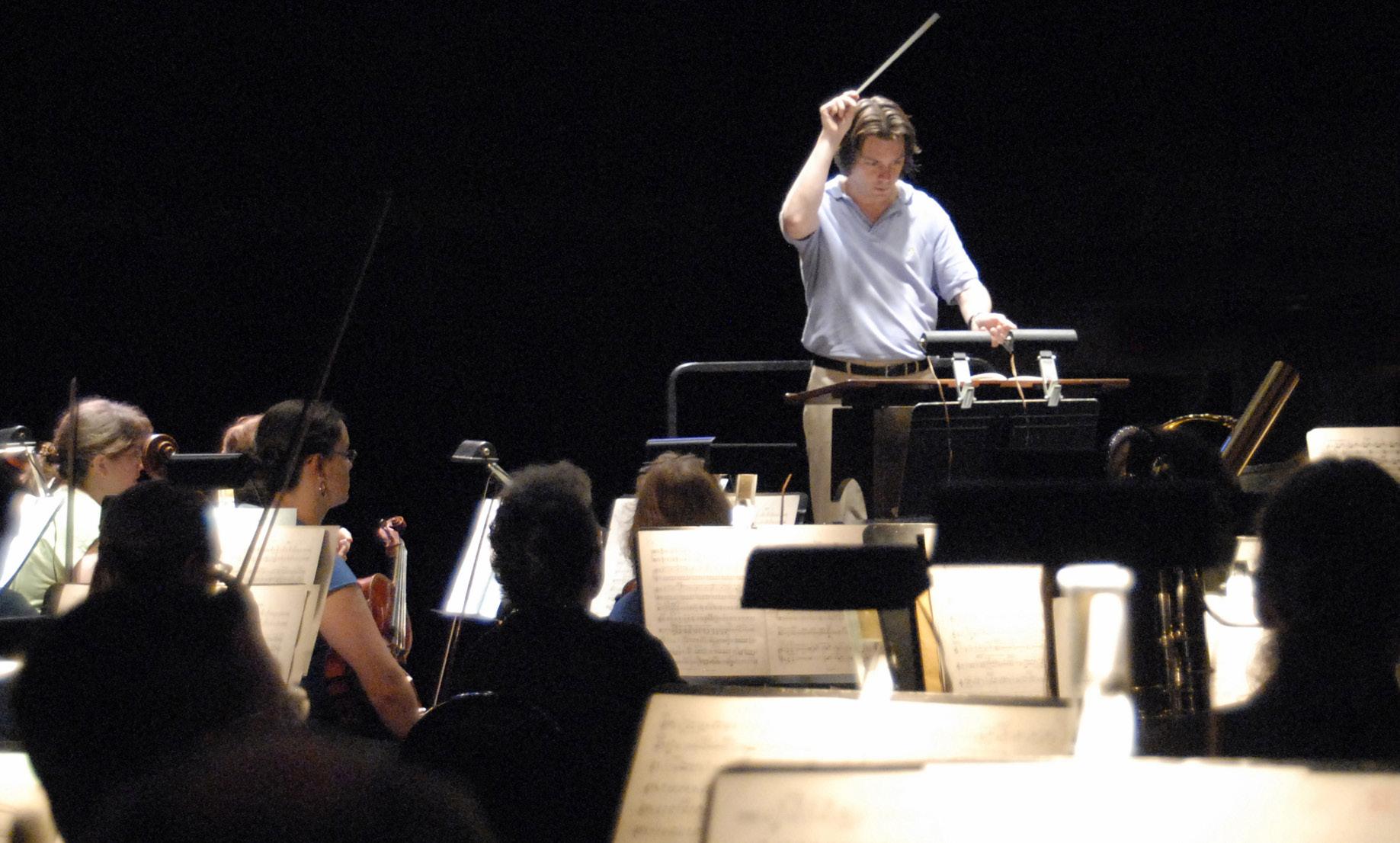
Daniel was given a blank slate. He thinks that allowed the search committee to see what he would program. “Am I programming the right music for this community and these musicians? That’s as much an integral part of my job,” he says, “as getting up in front of the orchestra and steering them through the repertoire.”
Daniel selected Tchaikovsky’s Fourth Symphony, the Sibelius Violin Concerto for Nicolas Kendall, whom he knew, and a short concert overture, “Oh, Lois,” by Michael Daugherty. “Oh, Lois,” from the longer Metropolis Symphony, is about Superman flying around Metropolis trying to impress Lois Lane.
“Oh, Lois” was a nod to contemporary music. “It’s not even 15 years old yet,” Daniel says. “I’ve met and worked with Michael Daughterty. He has a great sense of humor, but he also has a really strong belief that music can and should be of its time.”
How does Daniel put together a rehearsal week?
“I almost always start with the main symphony,” Daniel says. “Part of that is so that I get a sense of how they’re going to respond to me. The other is so I can quickly assess what is going to need most of my energy and my time in subsequent rehearsals.”
When he sizes that up, he is able to plan out the rest of the week. The overture is added on the second or third night. The concerto is usually not rehearsed until Friday, the night the soloist joins the orchestra. Saturday morning is a dress rehearsal. “I’m expected to get through the whole program, stopping as little as humanly possible, because the orchestra and I need to experience how we’re going to pace the performance,” Daniel says.
Daniel likes to address details of the symphony and the overture early in the week and then broaden the scope. “If you address certain aspects of ensemble, attack and intonation early on,” he says, “that work will manifest itself in the other music being played that week. A musical gesture that comes in the first few minutes of a piece is going to come back later in the symphony, later in the overture. If you attack a particular problem you want to master early on, that will pay benefits later when you come across it again.”
To an outsider, the wordless communication between conductor and orchestra can seem mysterious, even mystical. How does it come about?
Daniel says that except for a general greeting (“Good evening, it’s great to see you”), he usually makes no introductory remarks before getting underway. “The expectation with a professional orchestra,” he says, “is that everybody has come with the notes learned. So we start to play as an ensemble right away.”
He will try to get through an entire movement or a large chunk right away and then go back and work the details. And here’s where the magic happens. “As we work the details,” Daniel says, “I’m trying to show with my physical gesture, my eyes, my face, my body, what I want out of the music, what I think the composer is trying to convey through those notes.”
Only if gestures don’t do the job does he stop and try to explain with words. “Rarely do I give a philosophical background to a piece,” he says, “unless it’s a piece that is unfamiliar and I think the orchestra can benefit by knowing something about the circumstances under which the piece was composed.”
Daniel emphasizes that his job is to convey an enormous amount of information, “Without . . . moving . . . my . . . mouth,” he says, spacing out each word.
While Daniel is relying on musical body English, the players have their own challenge. They keep their eyes on their music, watch the conductor, absorb all the information he’s sending their way, while furiously playing all the notes with technical perfection.
“Precisely,” Daniel says. Then he adds, “Since there are some moments of complicated passage work, and they really need to be concentrating on the notes, my expectation is that they really are going to be watching me from the periphery. They’re just picking up cues from me.”
What does Daniel work on the most?
“I’m always trying to reconcile an individual musician’s sense of pulse with the sense of pulse in the orchestra,” he says. That’s what he calls the “heartbeat” and it may shift, depending on who’s playing when. “If you’ve got a tympani or battery of percussion going, then obviously they’re going to dominate that pulse. Often percussion isn’t even playing, so part of my job is to attune the orchestra to where I think the impetus of the pulse should be coming from. And it’s not necessarily from me.”
The heartbeat of the music has to be generated from within each musician toward some center point in the collective. “It’s my job to train people’s ears to that point,” Daniel says. “That’s one of the frustrations and struggles of not having a great acoustic in Thomas Wolfe Auditorium. I have to take more of that responsibility than I want, because they don’t hear each other well.”
“The best situation,” he says, “is where the conductor indicates where he or she wants to go with the music and the musicians have the freedom and the ability to hear each other across the room so they can run with it.”
In the five years since that first concert, where have Daniel and the orchestra moved together?
“My hope is that we’ve developed a sense of adventure,” Daniel says, “that anything we put on our music stands, we can tackle. There isn’t anything in the repertoire that we should be afraid that we can’t master, that we can’t bring to life.”
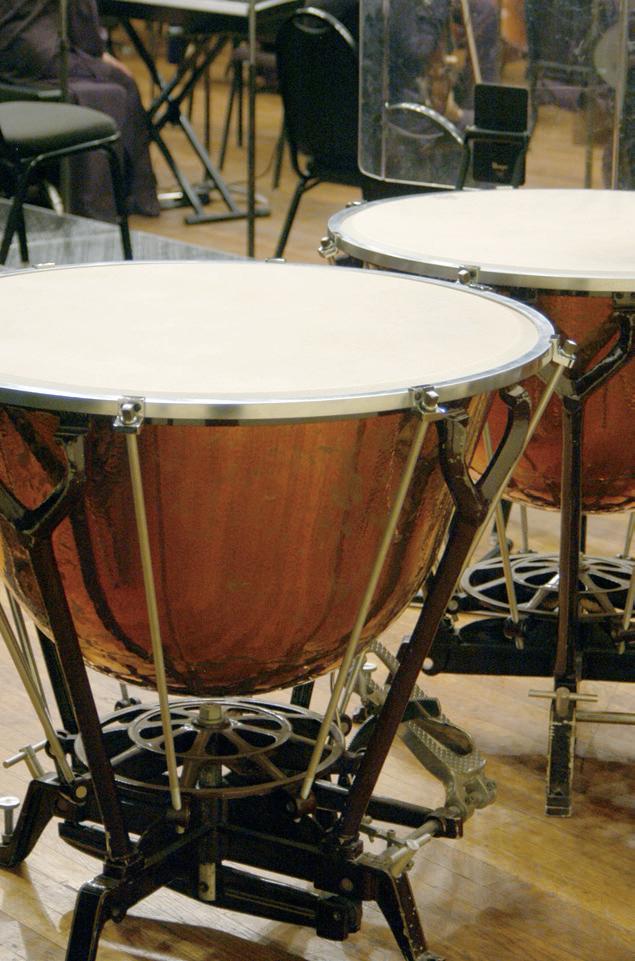
Daniel says the orchestra has also developed a strong sense of ensemble over the five years that he’s been here. “I don’t have to hold the reins so tightly anymore,” he says. There’s also more flexibility with the orchestra. “If I feel like something needs to have a little bit more time, needs room to breathe, or needs to speed up,” he says, “I can indicate that and the orchestra will go with it.”
To make that sense of ensemble, Daniel has worked on the basics of rhythm, intonation and playing together. “I spent a lot of time, with the strings in particular,” he says, “because there are multiple individuals playing the same part.” A violinist himself, Daniel wants unanimity of sound and approach, each player being at the same place with the bow and using the same bow stroke. “It takes a lot of time to work out those details,” he says. “In any orchestra I work with, I spend 80-85 percent of my time with the strings. It’s not because of any fault of theirs but because of the fact that you’ve got 14 to 16 individuals playing one part. If you’re the principal oboe, you’re the only one playing that part.”
Ask Daniel what the musical highlights of his first five years in Asheville are, and he cites a collaboration with Attack Theatre, a dance company from Pittsburgh which was commissioned to choreograph a piece to perform with the Symphony to Manuel De Falla’s El Amor Brujo. “Symphonies collaborate with ballet companies,” Daniel say, “but the orchestra is usually in the pit. We conceived of this as new choreography specifically for a concert performance, where the dancers would dance at the front of the stage and the orchestra would be behind them.”

Another performance he remembers with satisfaction was Mahler’s Fourth Symphony in his fifth season. “When I first got here, one of the first things I was told was, ‘Don’t do any Mahler,’ “ he says with a big laugh. He said, “That’s okay, we don’t need to do Mahler right away.”
Eventually, of course, he says, “you can’t avoid Mahler if you’re a symphonic conductor and if you’re a symphony orchestra.” When he got around to his fifth anniversary season, he knew it was time to do a Mahler symphony. “The musicians love to play the music, because it’s very challenging,” he says. “It gives something to chew on for every musician in the orchestra.”
He picked the Fourth Symphony because it is the easiest to absorb and to understand what’s happening. He says, “It’s the most delicate, the most Haydnesque of the Mahler symphonies. It doesn’t have the significant brooding drama and sturm und drang of the others. It’s a lovely, light, beautiful, hopeful, angelic piece, which ends with a child’s view of what heaven is like, sung by a solo soprano.”
If choosing the repertoire is one of a music director’s most important jobs, how does Daniel approach it?
He draws on his own musical knowledge, of course, but he also consults with the musicians and the board. “We poll the orchestra to get a list of symphonies and concertos they want to play and guest artists they’d like to bring. We also have an artistic advisory committee, made of board members and musicians, and we meet several times a year to talk about repertoire.”
He likens his role to a chef. “I have to start assembling the ingredients and putting them together into a menu that’s not too heavy on the classic period, not too heavy on the Romantics, not too heavy on Russian composers. In other words, the whole season has to have breadth, but each individual concert needs to be a journey of its own,” he says.
Daniel also has a commitment to contemporary music. “I try to not let a season go by without playing some significant music of our own time,” he says. He mentions composers Richard Danielpour, Michael Daughterty, Jennifer Higdon, John Corigliano and John Adams. “We were part of the commissioning group for David Stock, an American composer who wrote a percussion concerto for Lisa Pegher. I think we were only the third or fourth symphony that played it.”
The Symphony was also an early performer of Concerto for Percussion and Orchestra: The Healer by Lucas Richman, music director of the Knoxville Symphony. “We were probably only the second or third orchestra to play The Healer,” Daniel says. “That was a thrill.”

As he looks ahead for the Symphony, Daniel sees more collaborations with other artists, similar to the Attack Theatre El Amor Brujo and a performance of Aaron Copland’s Appalachian Spring which featured projected images by Asheville area photographers.
He starts thinking about future concerts many years in advance. “I’m already starting to think of Season 51 and Season 52,” he says. As ideas occur to him, he writes them into his calendar or on yellow Post-It Notes which he sticks near his computer. One category of notes he calls “Dream Works,” performances that may stretch everyone—orchestra, conductor and audiences—in new directions. Among his Dream Works: “I would love to do some concert operas,” he says. “I would love to mount a concert performance of Tosca or Stravinsky’s Oedipus Rex, works that for some reason or other we can’t do on an Asheville stage except in a concert performance with the Asheville Symphony. Britten’s War Requiem is another such work. Incredible in every way conceivable.”
He may not have seen the runway before he landed in Asheville for his audition concert, but Daniel Meyer has a clear flight path for his years ahead with the Asheville Symphony.














The Asheville Symphony staff wrangles musicians, equipment, schedules, finances and audiences.
The conductor is the name and face we most associate with a symphony. Try saying “Boston Pops” without thinking “Arthur Fiedler.” (Sorry, John Williams and Keith Lockhart.)
But if the conductor is the face of the orchestra and the person who keeps the musicians at their best, who keeps the conductor and the musicians and a dedicated corps of board members and volunteers playing at such a high level?
For the Asheville Symphony, that would be Executive Director Steven R. Hageman, Artistic Administrator Sally J. Keeney, Office Administrator Elisabeth P. Varner and Operations and Stage Manager Michael J. Morel. They are the offstage team who make what happens onstage possible.

“I’m not a musician or an artist,” says Steven R. Hageman. “I focus on the business side, the fund-raising side, the development, the long-term health and viability of the organization.”
Still, as a concertgoer since his days as a business student at Indiana University (which has one of the country’s top music schools), Steve understands that the Symphony’s business is music. “I make sure to fit the financial operations of the organization with the long-range artistic goals of the board, the music director and the community,” he says.
Steve came to the Symphony after a 20-year career on Wall Street and in Florida. Although he considers Chicago his hometown, his parents, the late Betty and Bob Hageman, moved to Asheville while Steve was in college. He joined the family equipment leasing business here in 1993.

Steve and his wife were attending the Symphony with a good friend, David Pheil, who was president of Symphony’s board at the time. “The person they had hired as executive director left after a year, and he knew I was looking around, with no intention of staying in the family business. He asked me if I wanted to watch the Symphony for awhile.” “Watching it” turned into a 14-year commitment.
Ask Steve when he started and he’ll tell you the exact date: May 1, 1997. “The main thing I found,” he says, “was lack of things employees need to run an efficient business: computers, software, hardware. Elisabeth and Sally shared a computer; they had to get up from their desks and go to a computer station. You need to give employees the tools they need to perform their jobs.”
The budget at the time was around $700,000. “We were just breaking even,” Steve says. “There was no reserve, no backup. They had gone through a crisis a few years prior to my arrival and had done a ‘Save Our Symphony’ campaign to raise money and awareness. We were able to operate, not in a grand fashion, but basically function.” Now, Steve says, “We’ve become a much more business-like organization.”
With the financial stability that Steve brought to the organization, the Symphony was ready to extend the September-April season with an additional concert in May. That was in 2006-07, the orchestra’s second year under new Music Director Daniel Meyer. Daniel’s arrival generated a jump in Symphony support.
“We used to have six Masterworks concerts,” Steve says, “but we felt with growing demand and the interest we were seeing from our ticket buyers, a seventh concert would round out the season. Adding a concert is always an economic risk.”
What does the executive director do at the actual performance?
After giving a short welcome from the stage (“The key to a good curtain speech is brevity,” Steve says), he gets to sit in the audience. Does he worry? “I feel a sense of accomplishment and pride,” he says, but then adds, “As much as I enjoy our symphony, I’m working and can’t relax. So I go down to hear the Atlanta Symphony at least once a season.”
Even if he can’t relax at an Asheville Symphony concert, at least Steve hears it from out front. Elisabeth Varner, who has been with the Symphony since 1986 and Sally Keeney, who has been onboard since 1982, have never heard the Symphony the way the audience hears it.


“I rarely ever get to enjoy the concert,” Elisabeth says. On concert days, she arrives at 9:00 a.m. and stays until the performance is over around 11:00 p.m. Immediately before it begins, she is at a table in the lobby of the Thomas Wolfe Auditorium making sure subscribers have their tickets. “You’d be shocked at the number of people who forget their tickets,” she says.
Once the performance begins, she stays in the lobby to help latecomers. Then she goes to the banquet hall upstairs to arrange an after-concert reception. Because Daniel Meyer gives a pre-show talk there right before the concert, the room can’t be set up until afterwards.
“I have to move tables and chairs around, put out candles and flowers,” she says. “By 11:00 p.m., I’m draggin’ my wagon.”
While Elisabeth is upstairs, Sally is sitting in the wings ready for whatever might happen. “When Daniel walks offstage,” she says, “I greet him with a towel and water. I did that with Bob Baker as well. It’s something that helps them out and it’s easy to do.”
Audiences try not to cough or rustle paper while the orchestra is playing. What about the musicians? “If somebody goes into a coughing spasm,” Sally says, “I can try to slide a cough drop out to them. If someone gets ill, they all know I’m right there, they can look over to get my attention.”
Occasionally Sally has to make a discreet onstage appearance. “I’ve righted a music stand that fell over. When we’ve played outside, I’ve held down music stands in the wind.”
Of course, performances are only one part of the story. Elisabeth ticks off some other duties. “I sell tickets, I pay all the bills and do the billing for our advertisers. Sally and I together do the seating assignments for our subscribers, which is a pretty big job.”
It’s more than just “pretty big,” it’s a huge job to get 1,400 subscribers into the seats they want seven times a season.
As subscription orders arrive in August, Sally and Elisabeth work full-time for at least a week to figure out who goes where. “It’s like the pieces of a giant puzzle,” Elisabeth says. “We try to give them as close to what they want as we can. People definitely do have their preferences.”
They can’t give everyone front row mezzanine seats, usually the most desirable for sight and sound. Current subscribers can renew their same seats or make changes by a certain date. New subscribers then get their seats. Last assignments go to buyers of the “Pick Three” out of the seven concerts.
Elisabeth notes that when she and Sally began doing this, they had no computers. They used notebooks, with a page for every row. “The auditorium has 2,354 seats,” she says, citing the number easily, “and every single row has an odd number of seats. I think that’s very peculiar. Most of them have 15 seats.” They spent a lot of time writing—and erasing—until every subscriber had the best seat Elisabeth and Sally could find.
Even with computers, the task involves not only putting a puzzle together but diplomacy as well. “If we get to point where someone says, ‘I want this seat and nothing else,’ we have to call them,” Elisabeth says. “We say, ‘This isn’t available but we have this, will this work for you?’ People appreciate the effort. Very seldom do I have someone say, ‘I’m just not going to do it.’”
After 23 years, Elisabeth and Sally know a lot of the subscribers’ preferences by heart. “I really do,” Elisabeth says. “I can look at somebody and know where they sit.”
While Elisabeth handles the audience, Sally wrangles musicians. The Symphony has a core roster of 94 musicians, but not every musician is needed for every concert. Since most of the musicians play in other symphonies and some live in other communities, not every musician is available for every concert. So another giant puzzle with multiple pieces for Sally to put together.
When she began in 1982, she had the names of the musicians in a computer database but no spreadsheet program to move them around easily. “I remember sitting on my living floor with spreadsheets spread everywhere, everything handwritten,” she says, “managing their contracts, their payments, calling them all to hire them, because you couldn’t send e-mails then.”
To complicate matters further, not all the players in the large string sections sit in the same seat for every concert. Except for the principal, associate principal and assistant principals, they sit two to a music stand and change partners and positions. Why? “To make sure that people don’t always sit in the back and don’t always sit in the front, to make it fair,” Sally says.
And Sally considers tiny nuances for each musician as well. “Sometimes someone doesn’t see from the left as well as from the right, so they have to be on the correct side of the music stand,” she says.
Weather, illness and last-minute schedule conflicts can require Sally to turn to her database of almost 800 substitute musicians. “Just this last season, I must have lost 10 or 12 musicians in the last two weeks before a concert,” she says. “Two people had fallen on the ice and broken a wrist. A lot of Symphony musicians are professors at colleges and have events they must attend. Somebody has a baby, or their wife has a baby. I had to scramble to get musicians and scramble to get the music to their substitutes.”
Like Sally and Elisabeth, Stage Manager Michael Morel has months of advance planning before each season. Then there is an intense round of duties right before and during each performance. He works with Sally, Elisabeth, Steve and Daniel Meyer to figure out how the stage will be need to be set-up for each concert. And there are even changes during a concert, when pieces in the evening’s schedule have different requirements for numbers of players and instruments.
Concerts with theatrical elements, such as the Red Herring Puppets performing Petrushka in 2008, are often planned a year or two ahead. “These concerts often require cooperation with other partners,” Mike says, citing working with NASA for Hubble Telescope images projected during The Planets in 2007 and a pool of professional photographers for images


projected during Appalachian Spring in 2009. He prepares mock-ups of the stage and hall to plot the best use of the stage and figure out exactly how the concert will flow.

The week prior to a concert, Mike works with the local stage union (IATSE Local 278) and the Asheville Civic Center crew to prepare Thomas Wolfe Auditorium for rehearsals and the performance. That means building out the front stage area, bringing all the Symphony’s chairs up from its rehearsal hall and setting them out on stage, along with music stands and large instruments. He puts risers in place, sets up a concert shell and ceiling shell over the players for acoustics and places lights to make everything look its best.
During rehearsals, Mike says, “I tweak the stage set-up and choreograph the stage changes, whether it involves moving a piano to solo position, or clearing parts of the stage for special instruments or soloists. We try to get everything done as quickly as possible so the audience doesn’t have to wait too long between pieces during the concerts.”
On concert day, Mike prepares the rest of the Civic Center for the performance. “That includes preparing the lobbies with proper signage, “ he says, “setting up our various contact tables and getting the banquet hall ready for pre-concert lectures and post concert parties and setting the backstage.” And if he didn’t have enough heavy lifting during concert week, Mike also helps Sally, Elisabeth and Steve sell tickets right up to concert time.
Like Sally and Elisabeth, Mike is too busy during a concert to hear the Symphony as the audience hears it. He’s backstage with Sally, directing musicians to the stage, assisting guest artists and keeping the concert as close to on-time as possible. When the magic moment for showtime arrives, he calls for the auditorium lights to go out and he and Sally direct the concertmaster and conductor to the stage. Then, he says, “we let the musicians take over. But we’re also waiting in the wings in case anything ever goes wrong.”
Mike began working for the Symphony in May 2007, after graduating from Appalachian State University and an internship with the Asheville Area Arts Council. A musician himself who plays percussion and keyboard instruments, Mike especially enjoyed the concert when he was asked to play accordion for Shostakovich’s Waltz No. 2. “That was a lot of fun,” he says. “How many people can say they’ve played accordion in an orchestra?”
Mike remembers another occasion when he almost played but didn’t. “One of our percussionists was stuck in Biltmore Village before a concert at the train tracks behind a long freight train,” he says. As the performance time got nearer, Mike was asked to step out and sight read the part if he did not make it in time. “Luckily for all of us,” Mike says, “he showed up just before the downbeat.”
From top hat and tails to boater and bow tie, Robert Hart Baker is a conductor of style.

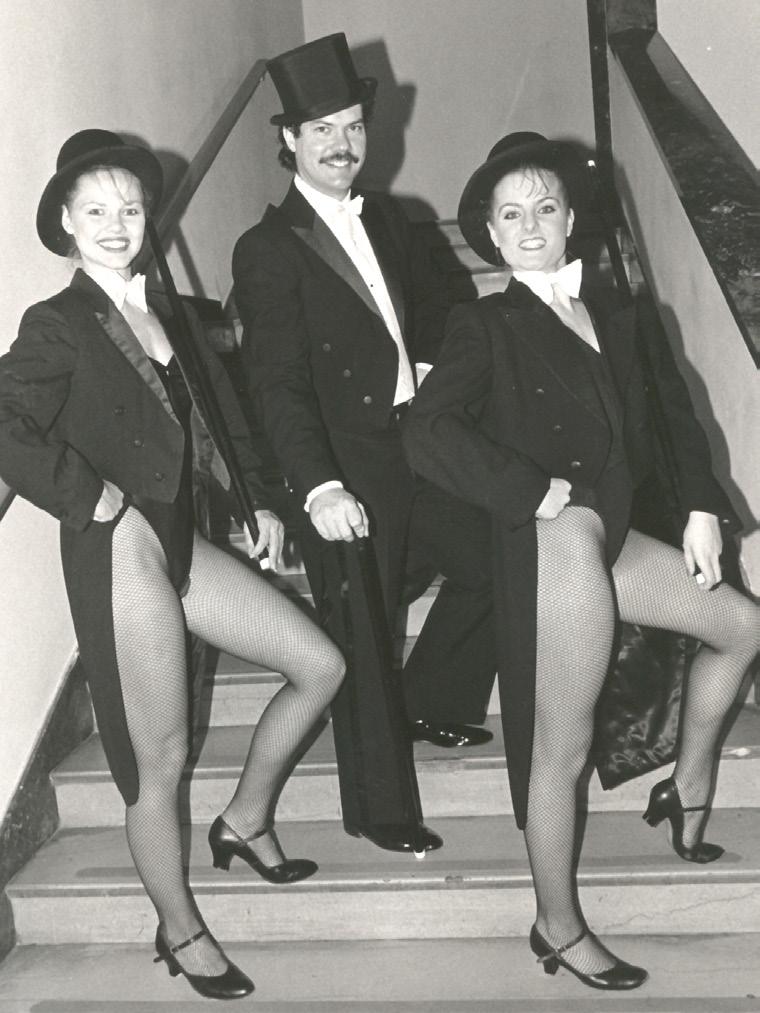
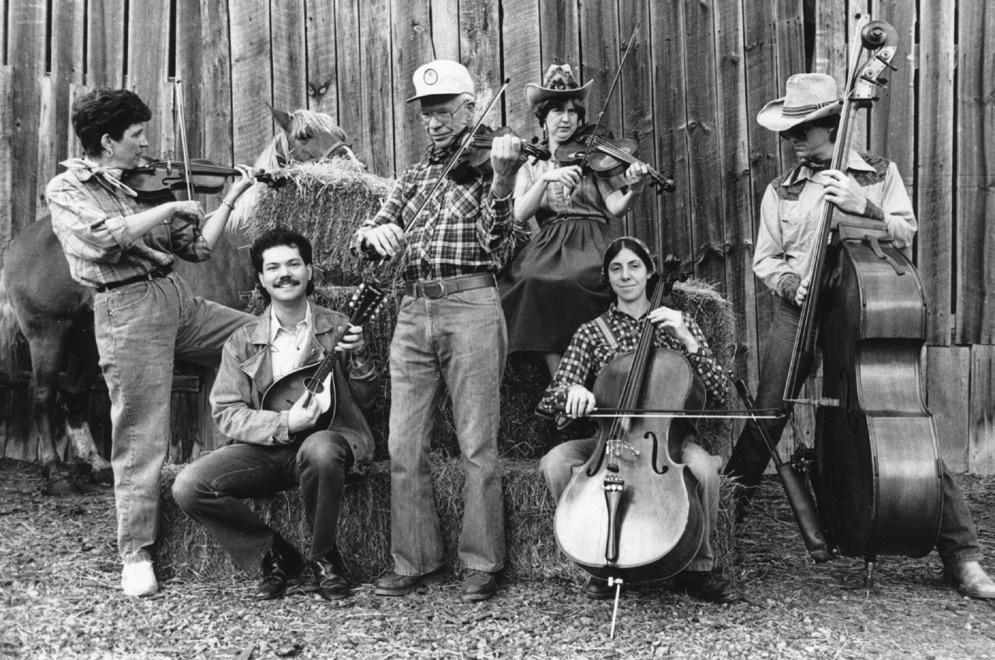
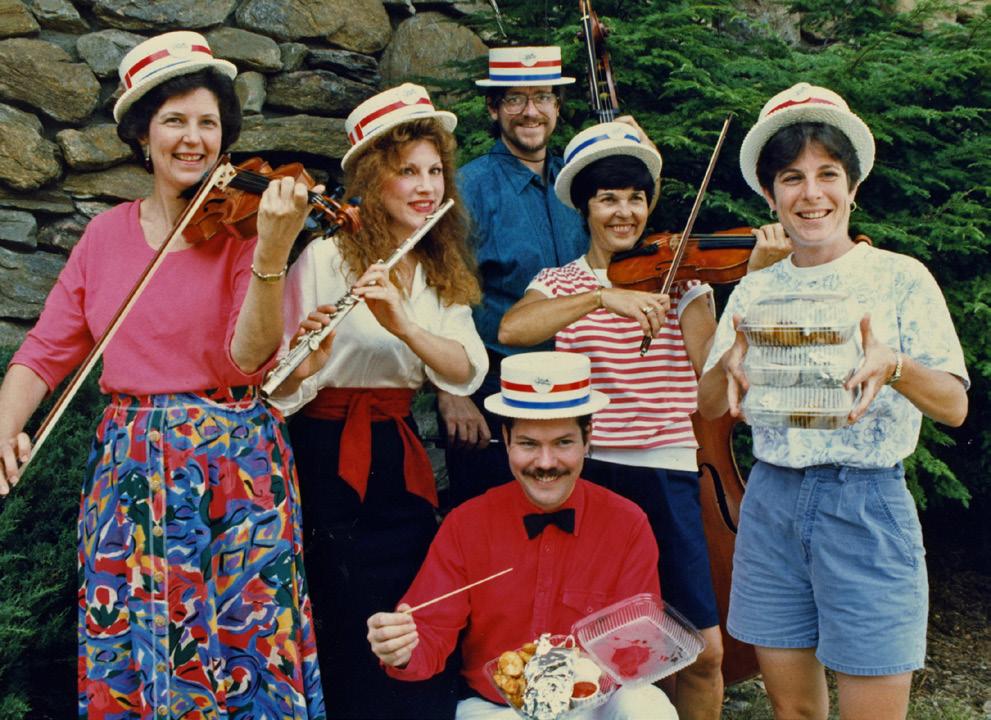
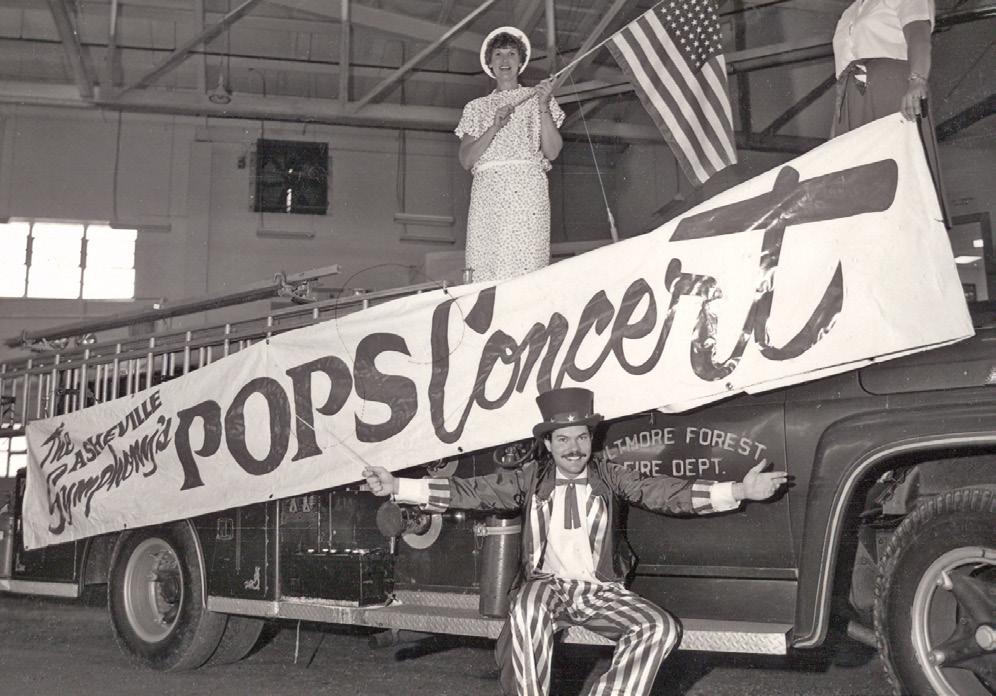
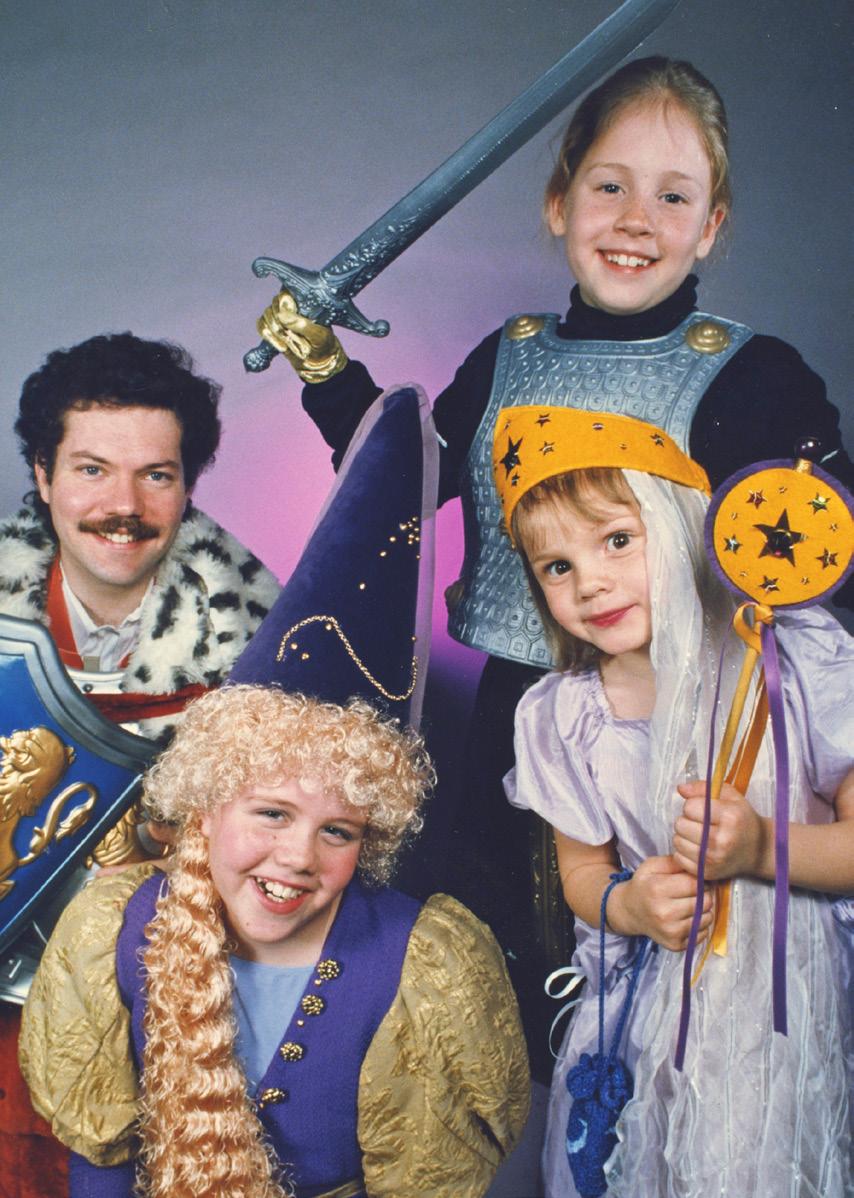

A college president was once asked what makes a good trustee. “Work, wealth and wisdom,” he said, “preferably all three, but at least two of the three.” That famous answer has become the mantra for board members of all non-profit organizations.
Over its 50 years, the Asheville Symphony’s officers and board have given more than their share of the “Three W’s.” Until an official history can document the details (maybe for the 60th anniversary!), several Symphony stalwarts recall what makes their time on the board memorable.

Joyce Dorr, the founding chair of the music department at UNC Asheville, began volunteering with the Symphony almost immediately when she arrived in Asheville in 1978. She joined the board in 1982, served as president 1995-97 and “retired” in 2000, after 18 years.
As a music scholar and administrator herself, Joyce had a ten-year role as vice president for artistic affairs. Her greatest musical challenge, she says, was selecting the repertoire. “There was a tenacity for the old and the familiar. Anything written after 1880 was considered avant-garde. And only a few liked the Baroque.”
To encourage the board (and audiences) to be more adventurous, she asked Music Director Robert Hart Baker to expand the options for her committee. “I had some interesting meetings,” she says. “Some were adamant we should only do Beethoven, Brahms and Mendelssohn.”
One strategy she adopted was to hold final meetings at the Three Brothers Restaurant, where artistic recommendations were decided. “I would say, ‘Let’s get a martini.’ Some of our committee members mellowed so we could get past 1880,” Joyce says.
Certainly two of Joyce’s most important contributions of work and wisdom were serving on the search committee that hired Robert Hart Baker as music director in 1981 and then co-chairing with board member Bill Roskind in the search that brought Daniel Meyer to Asheville in 2005.
For the Baker search, she said, “We felt it was time we had a professional conductor who regarded this as his primary orchestra, that he would develop it and bring it to the next level.”
They wanted a conductor who would move to Asheville and take the title “resident conductor,” even if he served symphonies in other cities, as most conductors do. To make that financially feasible, she enlisted the help of William Highsmith, the long-time UNC Asheville chancellor, and Baker also joined the university music faculty on a part-time appointment.
Baker’s first task in taking to the orchestra to the next level, Joyce says, “was giving the players a stipend. Then, because he was young and energetic, he was able to attract more talented musicians. That immediately raised the caliber of the orchestra.”
During the search that hired Daniel Meyer, she spent a lot of time talking with Henry Fogel, then president of what is now the League of American Symphonies. “He told me that what Asheville needed at this point in its development was a young conductor who was on his way up and was trying to build a national reputation,” Joyce says.
That’s what she got. “Daniel is a miracle worker,” she says, “and catapulted the symphony to a whole new professional level.”
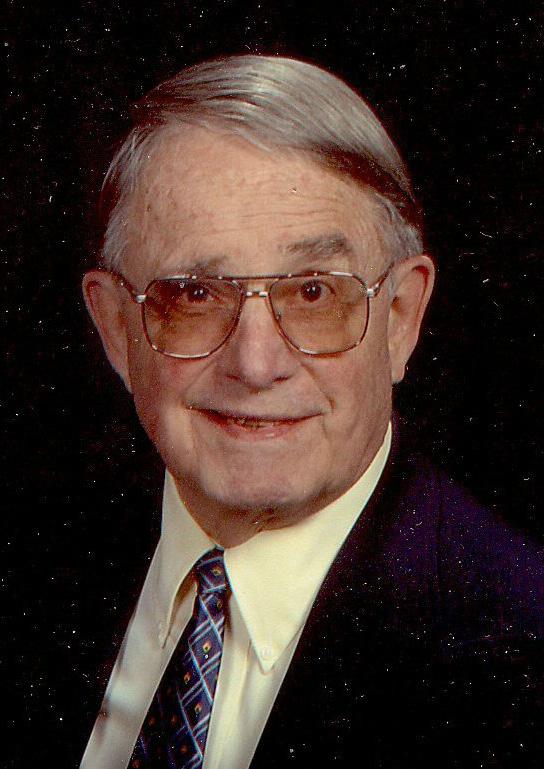
Karl Quisenberry is a nuclear physicist who during one career designed nuclear reactor power plants for submarines for Admiral Hyman Rickover, the “Father of the Nuclear Navy.” Karl and his wife, Shirley, retired to Asheville from the Houston oil industry in 1992. There, they went to 18 Houston Symphony concerts a year. “That’s how I learned about symphonic music,” he says.
In Asheville, they both became active with the Symphony, Karl on the board, Shirley with the Guild . Karl was so impressed with the Guild that he became one of the first board members to join. “It raises vast sums for the Symphony,” he says, “The Guild has been so successful lately that more board members are joining it.”
After he joined the board, Karl says, “I discovered they didn’t have term limits. I believe in term limits, so I persuaded the board to install term limits.” Now board members serve two threeyear terms, although officers may serve longer.
Although he gave plenty of work and wisdom, Karl focused his attention on the “wealth” leg of the “Three W’s” as vice president of finance and vice president of marketing.
“The financial situation was always shaky, always on the razor’s edge,” he says. “When I joined, not all board members made substantial monetary contributions. Some made no contributions.” He’s proud that the finance committee and the entire board cooperated to change that.
Keeping the budget in balance always required difficult choices. “One year when I was chair of the finance committee,” Karl says, “we didn’t have any money for a children’s concert. Carol McCollum was on my case. I said, ‘Carol, I’ll make you a promise, next year a children’s concert will be in the budget.’”
The following year, when there was still no children’s concert in the budget, Carol reminded Karl of his promise. “So I moved to add $5,000,” he said, “which unbalanced the budget. We didn’t have the money, but it was something important and we managed to raise the additional amount.”
Reflecting on his nine years of service, Karl says, “This was the most rewarding and enjoyable volunteering of my life.”
Like Joyce Dorr, Carol McCollum is a board member who recalls the search that hired Daniel Meyer. “That was a fabulous experience,” she says.
Carol came to Asheville as a newly-wed in 1978 with a family background in music dating back to her great-grandfather, Leander Sherman. He founded Sherman, Clay & Company in San Francisco in 1870, a major retailer of pianos that is still operating today.
“During the San Francisco fire of 1906,” Carol says, “the music store burned down. Steinway in New York sent new pianos to replace the ones that got destroyed, at no charge.”
Her grandmother was a pianist and violinist, and her mother, Dorel Abbott, who is also a Symphony supporter, is a pianist. “In sixth grade, I was the tallest person, so I played string bass,” Carol says.
Carol first became involved with the Symphony through the Guild, serving as president 198889. She was president of the Symphony board 2006-08.
She traveled with a Symphony group to Jacksonville for an American Symphony Orchestra League workshop on how to do a conductor search. “We learned that we needed to add more musicians from the Symphony to our committee,” she recalls.
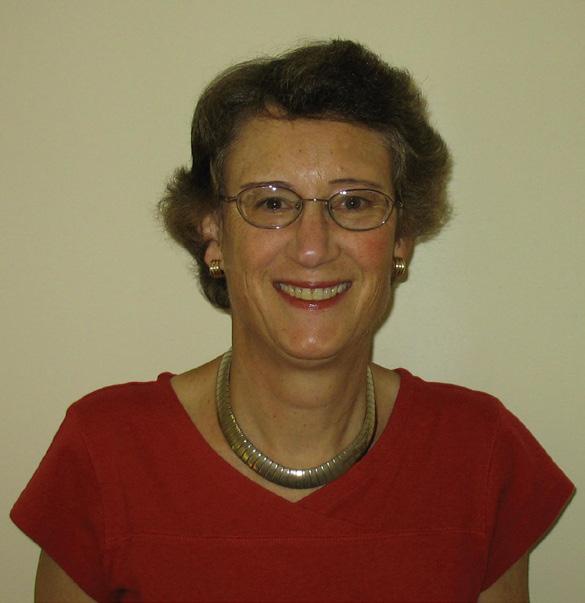
Young men and women who were seeking conductor positions were at the workshop to perform with the Jacksonville Symphony. One of those conductors was Daniel Meyer. Even at that first viewing, Carol says, “The committee was impressed with him.”
The committee received 293 applications. “I was one of four who read them all,” Carol says. “We just kept narrowing it down and narrowing it down.” One of her favorite Symphony concerts was Daniel Meyer’s audition concert, with violinist Nicolas Kendall as soloist. Carol says, “People were ready to say, ‘We’ve found our conductor.’”
During Carol’s presidency, the Symphony launched a two-year fund-raising campaign. “I was very proud of the fact that we raised $533,000, which was a two-year record,” she say. “We received gifts from more donors than ever before, including 245 new ones.”
Jack Sherman, like Karl Quisenberry, focused his time and talent as a Symphony board member on strengthening its finances. He joined the board in 1979 and was treasurer during the presidency of J. K. MacKendree Day, 1982-84. “It was always a very difficult time,” he recalls. “There was one year we would meet every week in Mack’s office just to see what bills we could pay, because of the cash flow crunch.”
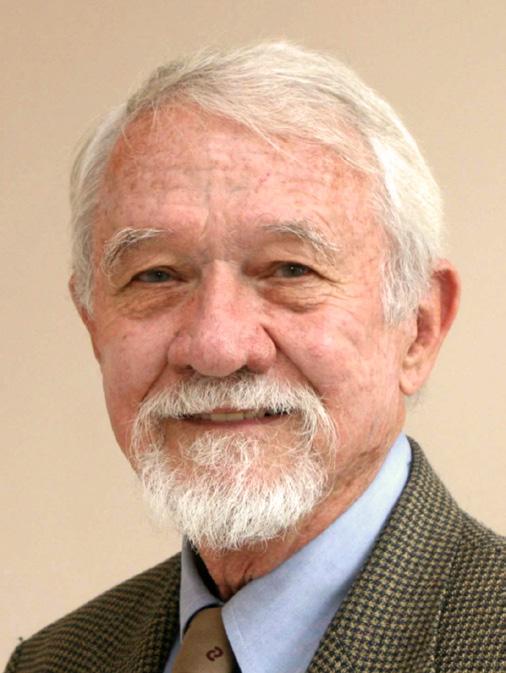
Jack is a retired stockbroker who moved with his family to Asheville in 1978 after representing a New York firm in Caracas, Venezuela. His mother studied piano at Juilliard and Jack took lessons as a child. He taught himself to play the organ when he was in the army. “I had my mother’s beautiful Conn organ shipped to Venezuela,” he says.
Jack served three terms as Symphony president, 1989-92, and brought the Symphony through its worst financial crisis. A debt of $100,000 had been accumulating over several seasons. Before the 1991-92 season could begin, something had to be done.
In the summer of 1991, Jack and his board initiated what they informally called a “Save Our Symphony” campaign. “That June we had three emergency meetings,” Jack recalls. “I said, ‘We cannot continue going from crisis to crisis. We’re using next year’s money. We’ve got to solve this or we close the doors.’”
The first meeting, he says, “was to really let it all hang out, to acknowledge where we stood.” For the second meeting, Jack told the board everyone was to come up with three ideas about how to save the Symphony. “We had a blackboard,” he says, “and Philip Messner, the general manager, stood and wrote down all the ideas. We compiled all of them and came up with a plan.”
At the third meeting, they set step-by-step goals to implement the plan. “With a fabulous combined effort from the board,” Jack says, “Chuck Lilien, who was a banker, put together a recapitalization plan.”
At an August meeting the board was ready. Jack recalls that a television news crew showed up and said, “We understand you’re going to vote tonight on whether the Symphony will continue.” Jack replied, “If I have anything to say about it, we will continue. But the board will make the final decision.”
By spring 1992, Tony Kiss was writing in the Asheville Citizen-Times, “That the ASO is still around is nothing short of a minor miracle. Last summer, a $100,000 debt almost pushed them out of business. But their loyal fans responded to a last-ditch campaign for financial support, and a year later, most of the debt has been erased.”
“You never take a negative attitude,” Jack says. To help wipe out the final $18,000 debt, the musicians agreed to donate their services for a fund-raising Pops concert on City County Plaza for Labor Day. “I found a large drum, with one side taken out of it,” Jack says, “and I personally walked around the pops concert asking people to throw in money.”
George Bilbrey, a cardiac surgeon, served a decade on the board, including two terms as president, 1999-2001. In September 1999, when he was president-elect, he chaired the strategic planning committee and started doing reading about managing and marketing the arts.

He says that his group was not developing a new strategic plan. “We were collating what had gone before and what people currently thought,” he says. “When we finished in May, we had a white paper, a discussion paper that was the ore out of which the board sifted for the gems.”
The “white paper” had 17 pages of gems, all reaffirming seven goals for the Symphony: to improve its musical performance quality, to expand and diversify its performance offerings, to increase understanding of classical music among its current and potential audiences, to develop a highly effective Board of Directors, to increase recognition of the Symphony in Western North Carolina, to develop the highest quality staff and to plan for the Symphony’s continued growth and long-term financial stability.
Besides the serious stuff, George remembers a performance that may be unique for the Symphony and unique for any board member.
“My wife bought as many tickets as she could for a Symphony raffle and won the chance to conduct. She gave it to me. Bob Baker didn’t know if I knew anything about music, and he was quite nervous about it.”
Bob Baker wasn’t the only one who was nervous. George was to conduct Sousa’s The Stars and Stripes Forever. “I had gotten a Sousa tape, but I was worried to death I was going ruin the tempo.” His one rehearsal, he says, was “a disaster. I didn’t give them a crisp enough downbeat for them to know when to start. My son, who was watching, said, ‘As long as you don’t make the piccolo player go into orbit, you’re ok.’”
At the performance, George says, “They started together, they finished together, everyone applauded. Afterwards, they gave me a little baton and a book on conducting. I now have a book and no opportunity.”
The Asheville Symphony Guild is a mainstay of support for the Symphony and music education.
When Mimi Cecil and Charlotte Lunsford, two of Asheville’s most dynamic community volunteers, started the Asheville Symphony Guild at the beginning of the Symphony’s fifth season in 1965, they could not have chosen a more apt name for a group that would become one of the orchestra’s mainstays.
In medieval times, artisans formed guilds for mutual aid and to uphold and improve the standards of their professions. The word guild derives from the gold their members contributed to a common fund. Certainly the women, at first, and then the women and men of the Guild have set a gold standard for fund-raising to make the Symphony bigger and better.

The Guild’s many activities over the past 45 years—home tours, “Tea and Symphony” talks before concerts, children’s concerts, pops concerts with stars like Dinah Shore and Tony Bennett, champagne galas and especially “Musical Feasts” —have helped the Symphony raise its musical sights and its visibility in the community.
Perhaps most of all, the Guild’s passion for bringing classical music to young people has created music education programs of enduring value.
No one was more passionate about music for young people than Lucia Ward, a professional mezzo-soprano opera singer in the 1940s who became a speech therapist in Asheville’s public schools.
After she retired, Lucia became an active volunteer with the Guild, the Symphony and the local chapter of Kappa Kappa Iota National Teachers Sorority. At a Kappa Kappa Iota meeting in 1978 she heard two Symphony strings players, Margaret Rich and Margery Kowal, make a plea for teaching strings to school children. Lucia went into high gear.
She had the right connections and the drive to make things happen. “There was something every day to do about the program,” she told Maggie Lauterer of the Asheville Citizen-Times. “Letters to write, visits, phone calls to make. And I’d never be able to count the number of cheese cakes I baked for people who were helping.”
She drummed up support from other civic clubs, PTA groups and ultimately the Buncombe County Board of Education and the Buncombe County Commissioners. County Commissioners gave the program an initial budget of $25,000. “Sometimes I got them out of the garden,” she told Maggie Lauterer, “but they didn’t forget me.”
She followed up by raising scholarships for children who couldn’t afford to rent instruments. By 1986, the Strings in the Schools program was reaching 400 students. Lucia, who died in 2002, and her husband, the late Albert Ward, provided for the future of Strings in the Schools with bequests that enabled the schools to take over the program from the Symphony in 2003.

Lucia Ward’s passion for music education inspired the Guild to expand its music education outreach. Two programs, Music in the Schools and summer music camp scholarships for talented young musicians, have become Guild signature activities. Frances Sandfort, a Guild member since 1994, recalls that Music in the Schools had humble beginnings. The Guild sent volunteer docents and the occasional Symphony musician into school classrooms to provide an overview of orchestral instruments and music.
“It was a basic program which had no official structure and therefore was limited in its scope,” Fran says. In the summer of 2002, Bill Roskind, then the Guild president, asked Anne Babcock and Marianne Coté, co-chairs of the education committee, to design a new, expanded program of music education. The impetus was an announcement by the Buncombe County School Board that they would be cutting back on school music because of a budget shortfall.
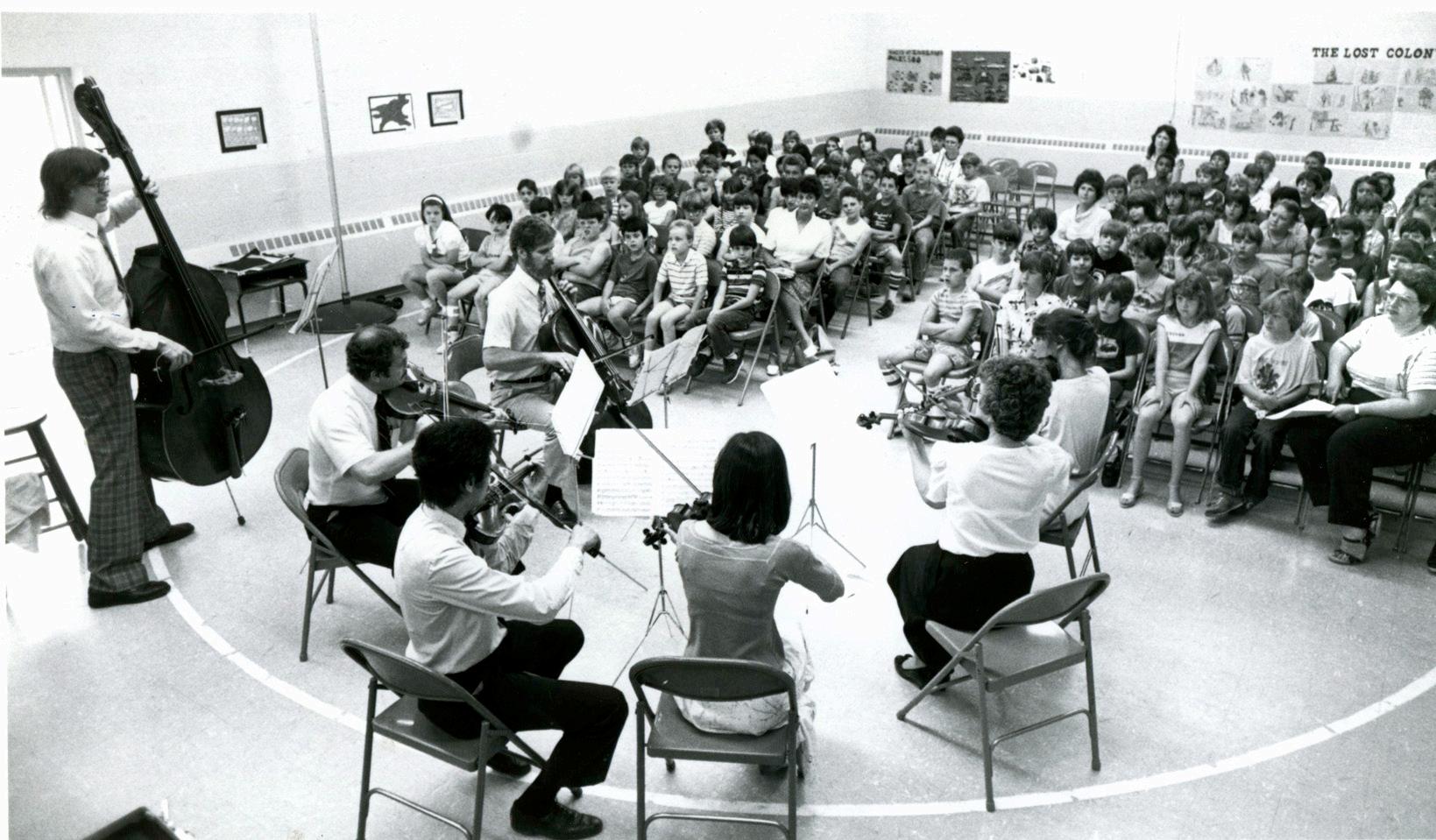
“That touched a nerve with me,” Anne Babcock says. “I felt that the Guild had an opportunity to increase its education component in support of the music teachers.” She remembers an early meeting sitting around her kitchen table. “As we discussed the shortage of funds and the shortage of available volunteers in the Guild, Bill Roskind said he hoped someday we could make the programs available to every school in the county. It was such an impossible dream then, but it has actually happened.”
The first year, third grades in three county schools had a performance by a brass quintet from the Symphony. The next year, they added a woodwind quintet for fourth graders. That was followed by a string ensemble for fifth graders. The Guild added Asheville City Schools to the program by 2005. By 2008, Music in the Schools was reaching all third, fourth and fifth graders in Buncombe County and Asheville.
Fran Sandfort says, “From a primary budget of $1,300 which reached 300 children, the program is now in every elementary school in Buncombe County and the city of Asheville and reaches upwards of 8000 children, at a cost of less than $1.50 per child.”
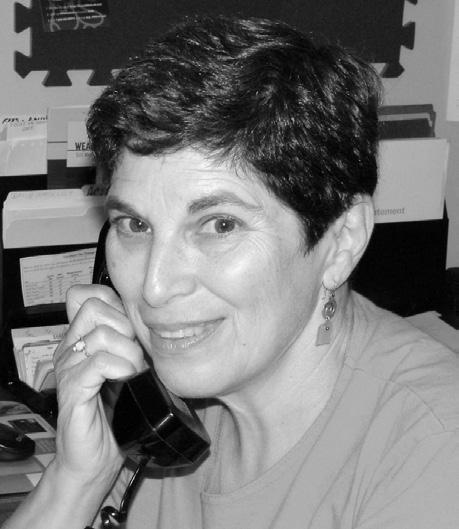

The Guild supports the program as part of its regular budget and also holds a “Pass the Hat” event at a fall Masterworks concert which the Guild sponsors. Actually they pass many hats. “We pass top hats,” says Carol McCollum, president of the Symphony board 2006-08, “and we get the children to pass them.” Other support comes from the Symphony and from endowments established in memory of Barbara Chisolm, Guild president during the program’s fledgling pilot project, and Lee Stinnett, a retired journalist who for many years edited the Guild’s newsletter.
From teaching kids about musical instruments and helping them learn to play, it was a natural progression for the Guild to help talented young musicians hone their skills. Anne Babcock credits Guild member Mary Williamson with suggesting the idea of scholarships to band camp. “That concept has taken off,” Anne says. “It wasn’t part of the original program design, so it’s an exciting new direction to travel.”
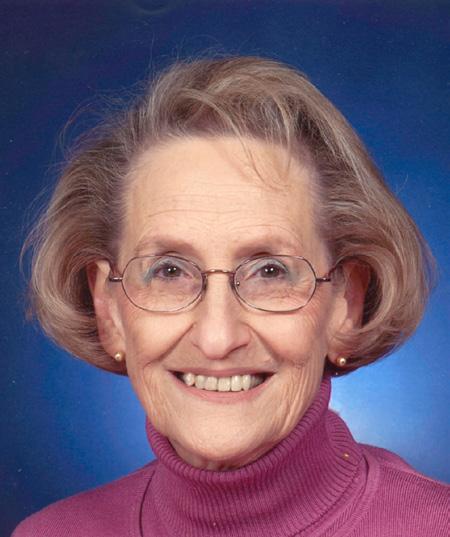
The Guild’s Summer Music Camp Scholarship Program now supports 10 instrumental students at a six-day summer camp at Mars Hill College, with the Symphony Board funding an additional scholarship. Students from a 12-county radius around Asheville are eligible.
While Anne Babcock and Marianne Coté co-chaired the committee during its formative years, Fran Sandfort says that Dian Leeper and Barbara Stickle deserve credit for leading the original pilot project to its present state. “Dian and Barbara,” Fran says, “guided the development from a baby idea to a grownup program. It’s heartwarming to stand back and watch an idea develop and mature.”
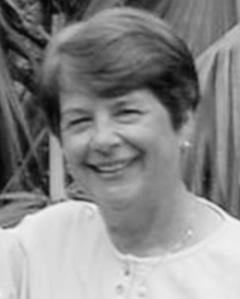
As the Guild has grown in programs and members, from 75 women in its first season to 430 men and women today, its financial support for the Symphony has also grown. Since 1981 the Guild has contributed over $800,000 to the Asheville Symphony. In the past five years, the Guild has raised, on average, approximately $65,700 per year. During that time, almost $250,000 has gone to the Symphony, and more than $50,000 has supported Music in the Schools. With its fundraising, Music in the Schools and summer scholarships, the Guild has certainly given golden opportunities to the Symphony and area young people.

Musical Feasts are the Asheville Symphony Guild’s signature events.
By Frances D. SandfortOver the past 25 years, an annual series of parties known as Musical Feasts has become the Asheville Symphony Guild’s signature fund-raising activity. For these “parties with a purpose,” hosts and co-hosts offer their homes or favorite places, their culinary acumen and their talents for conviviality to support the Symphony.

The present incarnation of Musical Feasts began in 1985-86, the Symphony’s Silver Anniversary Season, when Virginia “Ginger” Mallard, who originated the Feasts concept, had a booklet printed with all of that season’s 15 Feasts laid out in delicious detail. Prior to that, Musical Feasts were part of the Guild’s Special Events program, with only three or four Feasts offered during a season.
From the very start the Feasts set a standard—interesting, cosmopolitan and musical—for the food and culture of almost every continent.
A 1985 “Moveable” Feast, “A Medley of Continental Cuisine,” was offered at the home of Fran and Ray Scovill on Kimberly Avenue. Guests were entertained after dinner by lyric tenor Jay Scovill and soprano Alfreda Gerald, accompanied at the piano by Steve Williams of the Warren Wilson College music faculty. Co-hosting were Kay and Dick Gallagher, Karen and Clay Whitaker and Eddie Stearns. Three teenagers, Greg Gallagher, Reavis Eubanks and Bo Barrett, rolled a piano borrowed from the Edison Hill home along the street for the occasion.
In January 1988, Mimi and Bill Cecil offered a “Gala Austrian-Style Dinner” at Frith House, their home in Biltmore. Following the cocktail hour, guests enjoyed a sumptuous dinner served in grand style after which they adjourned to the Music Room. There they were joined by an additional group of guests, and the company enjoyed baroque music played by an ensemble from the Symphony.
Small dinner parties, gala affairs, bridge luncheons, games and sporting events appear in the Musical Feasts booklets. Over the years special favorites have been repeated: Christmas season brunch at the home of Chuck and Beverly Briedis is a perennial favorite; musicales at Bright Clearing, the home of local artist Leslie Ann Keller and her husband, Graham Ramsey, who raises orchids and built their lovely home around the remains of the chimney of his grandfather’s original cabin; and visits to Claxton Farm in Weaverville. And every year Marilyn Kolton and Lou Dwarshuis lead wildflower and/or bird-watching hikes. Picnics in one of Bob Caldwell’s “Secret Places” were an annual treat until he retired as WLOS-TV weatherman, as were Asheville Citizen-Times writer Bob Terrell’s tours for “getting-to-know-downtown-Asheville.”
Musical Feasts remain the Guild’s chief fund-raising vehicle. The first season’s 15 parties earned almost $8,000. This 50th Anniversary Season’s 21 parties could earn close to $22,000. Almost all Guild members have from time to time hosted, co-hosted, cooked, schlepped or been a guest at a Musical Feast, ensuring its success year after year.
D. Sandfort, a Guild member since 1994, has served as Hospitality
in 1998 and remains an active member.


Lamar Stringfield, a Mars Hill College and Juilliard School graduate, forms the Asheville Symphony Orchestra, performs concerts for three summers, before departing for the University of North Carolina at Chapel Hill.
Asheville Civic Orchestra and North Carolina Symphony in Chapel Hill formed by Federal Music Project; the two orchestras work collaboratively, with Lamar Stringfield conducting in Chapel Hill and Joseph DeNardo, director of music for Asheville City Schools, conducting in Asheville; Asheville Civic Orchestra performs concerts until early 1950s before becoming inactive.

Helen Sorton, a music graduate of the High School of Music and Art in New York and former publicity chairman of the Charlotte Oratorio Singers, becomes first manager.
Composer and Conductor M. Thomas Cousins of the Brevard College music faculty becomes first continuing conductor of the Asheville Little Symphony, leads a concert at Brevard College on May 1,1961, at which a “proposed plan for expansion for 1961-62” is announced.

Albert Chaffoo moves to Asheville from Defiance College, Ohio, for the Symphony’s Third Season to serve as resident conductor.
Charter revised to reflect a new name: the Asheville Symphony Society, Inc.; orchestra now referred to as Asheville Symphony and Asheville Symphony Orchestra.
Asheville Symphony (without the “Little”) plays first concert of its first subscription season on October 17, 1961, in David Millard Junior High School Auditorium; annual subscription seasons continue here through 1968.
Third Season ends with fourday Mozart Music Festival at Asheville-Biltmore College, with pianist Soulima Stravinsky, son of Igor Stravinsky, as guest soloist; the renamed Asheville Symphony Chorus, directed by Robert C. Rich, Jr., performs Mass in C Major.
Musicians associated with Asheville Civic Orchestra meet for weekly rehearsals at First Presbyterian Church at invitation of choir soloist Jane McIntire; Sol B. Cohen, violinist and composer teaching at the Asheville School, becomes conductor; Lamar Stringfield, retired to Asheville, plays flute and occasionally conducts rehearsals.
Joan Beebe, Agnes K. Whitman and Frank Rutland sign charter incorporating the Asheville Little Symphony in September; Sol B. Cohen conducts his final concert with the Little Symphony in November for a broadcast on radio station WWNC.
Asheville Symphony Chorale formed, performs Mozart’s Requiem with the Symphony; Asheville Youth Strings Orchestra formed.
The Symphony performs an outdoor pops concert at Asheville-Biltmore College at its recently-opened campus off W. T. Weaver Boulevard; for several years, the Symphony plays annual outdoor pops concerts in the breezeway of Phillips Hall.

Joseph E. Fischer, a member of the music faculty of Limestone College, Gaffney, South Carolina, later of Converse College, Spartanburg, South Carolina, becomes music director for the Fourth Season and serves through the Fifteenth Season.

Asheville Symphony Guild is established at the beginning of the Fifth Season, with approximately 75 women members; Mrs. Lewis Lunsford Jr. (Charlotte) and Mrs. William A.V. Cecil (Mimi) are founding co-chairs; its purpose is “to support and stimulate interest in the work of the orchestra”; the Guild begins a series of informal pre-concert “coffees” with talks by guest artists and the conductor; by the end of the Eighth Season, the Guild has approximately 170 members.

Guest soloists make their first appearances with the Symphony during the Fifth Season: Israeli pianist Malka Mevorach-Choset for Grieg’s Concerto in A Minor; Belgian cellist (and conductor of the Charleston, S.C., Symphony) Lucien DeGroote for Schumann’s Concerto in A Minor; and Paul A. McEnderfer, violinist and member of the music faculty at Furman University, for Tchaikovsky’s Concerto in D Major.
The Symphony performs its first free afternoon “Kinder Concert” for children at David Millard Junior High School Auditorium and a free afternoon Junior and Senior High School Concert at the City Auditorium at the end of the Fifth Season; “Kinder Konzerts,” as they came to be known, continue but move to a Christmas event in December, with admission charged.
To conclude its Sixteenth Season, the Symphony performs Carl Orff’s Carmina Burana, with the Asheville Symphony Chorus, the Western Carolina University Concert Choir, the Western Carolina University Chorus and the Western Carolina Community Chorus; choruses are prepared by Joyce Farwell, Sallie Whalen and James E. Dooley.
For its Thirteenth Season, the Symphony moves to the First Baptist Church while the City Auditorium is renovated as part of the new Civic Center; it stays here through the end of its Fourteenth Season in the spring of 1975; the choir of the First Baptist Church, under the direction of Charles F. Crocker, performs Brahms’ Song of Destiny with the Symphony for the final concert.
At the March 1978 concert of the Seventeenth Season, the Symphony performs Concerto for Bluegrass Band and Orchestra (Bluegrass Festival Suite) by North Carolina composer Carl Rhodes, with the McClain Family Band of Kentucky as guest artists; the composer wrote the piece for the McClains in 1974, who premiered it with the Louisville Symphony.



The Symphony returns to the new Civic Center for the first concert of its Fifteenth Season in October; its second concert of the season, on December 13, 1975, is the formal opening of the newly renovated auditorium, now renamed the Thomas Wolfe Auditorium.

For its Eighth Season the Symphony moves to the City Auditorium.
Tenor opera star Jan Peerce appears in January 1969, as guest soloist, the first of many notable musical artists to play with the Symphony; Peerce is originally scheduled for the Symphony’s regular Saturday concert on January 18, but when he is invited to sing that night at a Washington gala prior to the inauguration of Richard Nixon, the Symphony reschedules the performance to Sunday night, January 19.


For Tenth Anniversary Season, the Symphony expands its subscription series to five concerts.
To climax the Symphony’s Tenth Anniversary Season, soprano Phyllis Curtin is guest soloist on May 8, 1971; a gala champagne reception to benefit the orchestra is held after the concert at the Governor’s Western Residence at $10.00 per person; Ms. Curtin appears as guest soloist again in November 1980.
Helen Sorton resigns as Symphony manager at the end of the Fifteenth Season; she is replaced by Patricia Berlet, the Symphony’s principal violist, until Jane B. McNeill becomes manager after the first concert of the Sixteenth Season.
After the death of Joseph E. Fischer in an automobile accident, Robert B. Welch of the music faculty of Western Carolina University becomes artistic director and conductor for the Sixteenth Season; he will serve through the Symphony’s 20th Anniversary Season, 1980-81.
At the beginning of the Eighteenth Season, the Symphony establishes a Strings in the Schools program, under the leadership of Lucia Ward, the chair of the Guild’s education committee; at the end of the season, 196 students from 20 schools perform a Showcase for Strings at Asheville High School on June 5, 1979; by the end of the 23rd Season in 1984, there are over 350 students from 36 schools participating.

Randall Rosenbaum becomes Symphony’s fourth general manager, serves until 1982.
The Symphony celebrates its 20th Anniversary Season, the final season for Music Director Robert B. Welch; he begins the first concert of the season with Brahms’ Academic Festival Overture, which opened the Symphony’s First Season in 1961; soprano Phyllis Curtin is guest soloist in her second Symphony appearance.
Ensembles from the Symphony perform Christmas Concerts at the Biltmore House in November and December, beginning an annual tradition that continues for several years.
James Dooley, president of the Symphony board, announces the appointment of Robert Hart Baker, founding music director of the Connecticut Philharmonic, as the “first full-time resident conductor and music director,” in April 1981, shortly before Robert Welch’s final concert.

Robert Hart Baker conducts the Symphony’s first concert of its 21st Season, beginning a 22-year tenure during which the orchestra grows in size, professionalism, musicianship and number of subscribers. John Bridges writes in the Asheville CitizenTimes, “Larger in size, more resonant in sound and with marked improvement in technical accomplishment, the orchestra was a genuine pleasure to listen to. The level of this first performance also indicates what Asheville Symphony audiences may expect to enjoy in the future with the continued work of Baker.”
The Emerson String Quartet performs back-to-back concerts in Asheville; on Thursday, December 1, it performs with the Symphony at Thomas Wolfe Auditorium, then on Friday, December 2, for the Asheville Chamber Music Series at UNC Asheville.
The Symphony purchases a concert grand piano for its rehearsal hall in the Civic Center; the Guild contributes over half the cost.
Winners of the Guild’s Young Artist Competition, all pianists, perform at the Symphony’s Pops Concert in May.
The Symphony performs with the David Aiken National Touring Company production of Amahl and the Night Visitors at the First Baptist Church, under the direction of Charles Crocker, with the First Baptist Church Choir in December; Aiken, who sang in the famous first production broadcast on NBC-TV in 1951 under Menotti’s own direction, sings and is stage director.
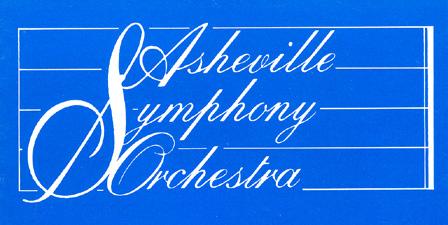
The Symphony celebrates its 25th Anniversary with a “Silver Season,” 1985-86, that includes as guest artists pianist Alexander Toradze, duo-pianists Joan Yarbrough and Robert Cowan, cellist David Finckel, violinist Daniel Phillips and a return engagement of the David Aiken National Touring Company in Amahl and The Night Visitors; the Symphony launches a “Drive 25” fund-raising campaign with a goal of $35,000 and raises $39,490 in private contributions.
Marcia Dean Onieal becomes sixth general manager, serves until 1989; Elisabeth P. Varner joins the staff and continues into her present position as Office Administrator.
The Guild presents the Symphony performance of “Ghostbusters,” a sold-out children’s Sunday matinee concert in February.
The Symphony performs Verdi’s Requiem for the first time in April with choruses from Western Carolina University, James Dooley and Robert Holquist, directors; Mars Hill College, Joel Reed, director; and MontreatAnderson College, Ed Carwithen, director.
Asheville Junior Symphony begins as an offshoot of the Strings in the Schools program; under the direction of Robert Hart Baker, some 70 fifth grade through junior high students perform a 45-minute program of selections from Haydn, Mendelssohn and Prokofiev in Lipsinky Auditorium at UNC Asheville.
Ellen Sandweiss becomes the Symphony’s fifth general manager, serves until 1986; Sally Keeney joins the staff as personnel manager, continues into her present position as Artistic Administrator.
The Symphony accompanies a concert by the North Carolina Dance Theatre in April at the Thomas Wolfe Auditorium; it will perform with the Dance Theatre again in 1983 and 1984.

The Symphony performs a gala concert in July to kick off the 1982 Bele Chere festival; flamenco guitarist Carlos Montoya performs solo selections; the program concludes with Tchaikovsky’s 1812 Overture; the performance is conducted by Robert Lyall, music director of the Oak Ridge Symphony Orchestra.
Jazz trumpeter Dizzy Gillespie performs with the Symphony, October 1982.
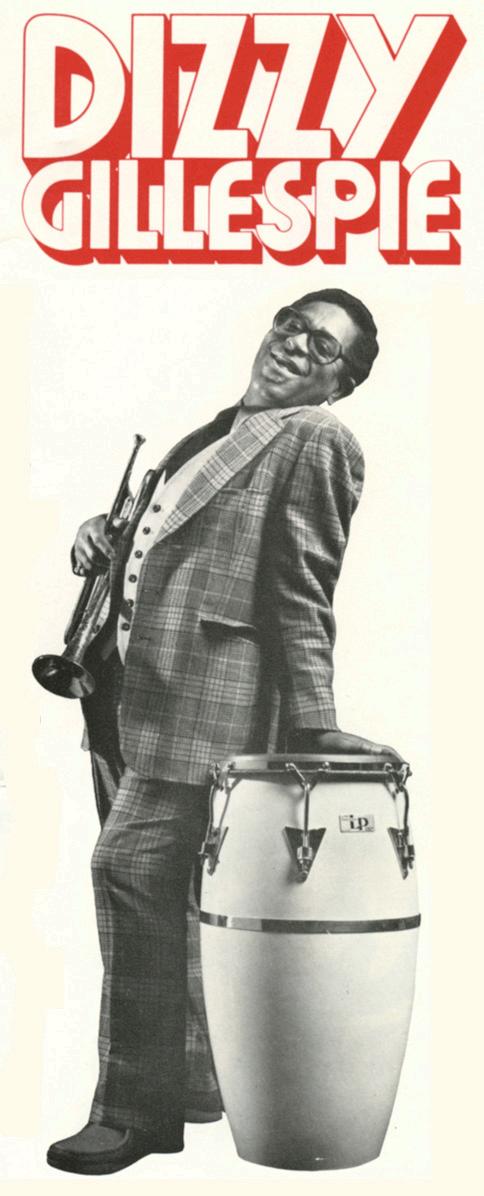
The Guild and the Symphony present “Happy 50th Birthday, Babar!” a Sunday afternoon children’s concert in January.

At the end of the 24th Season, the Guild produces “Rhapsody in Blue - Take Off with the Asheville Symphony” as its third annual Pops Concert; the June 1 event is held at American Enka’s airplane hangar at Asheville Regional Airport.
Also in June, to initiate the Symphony’s 25th Anniversary season, the Guild begins a fund-raising program of “Musical Feasts,” parties held at private homes; 15 events are held the first year; it expands to 19 the following year, becoming an annual Guild project and a major source of support for the Symphony.
The Guild produces “Picnic with Dinah,” on July 2, a “Patriotic Pops” concert with the Symphony and guest artist Dinah Shore at the horse arena of the Western North Carolina Agricultural Center; the concert concludes with Tchaikovsky’s 1812 Overture, complete with 16 electrically-charged cannons.

The Symphony combines with Asheville Junior Symphony for the first time at Bele Chere, for “Symphony In The Sky,” on the roof of the Haywood Street Garage on July 26.
Two weeks prior to the opening of the 26th season in October, the Symphony offers a free open rehearsal in September during “Asheville Symphony Month.”
Cellist Janos Starker is guest artist for Tchaikovsky’s Variations on a Rococo Theme in October; the Saturday night concert is in memory of Joseph Vanderwart, founder of the Asheville Chamber Music Series; Starker, a longtime friend of Joseph Vanderwart’s, appears the following afternoon to open the Chamber Music Series; Russian pianist Bella Davidovich performs Grieg’s Piano Concerto with the Symphony in November.
The Guild and the Symphony present “Carnival of the Animals,” a Sunday afternoon children’s concert, in February.

The Symphony closes its 26th Season with 500 new subscribers, bringing the total to a record high of 1,900 attendees.
In November Saxophonist James Houlik performs Concerto for Tenor Saxophone and Orchestra by North Carolina composer Robert Ward and the world premiere of Caryl Florio’s Introduction, Theme and Variations for Alto Saxophone and Orchestra, edited by Robert Hart Baker from the composer’s manuscript in the New York Public Library.
The Guild and the Symphony present “Music is My Life: The Garfield Family Concert,” a Sunday afternoon children’s concert, in March.

The Guild returns to the Western North Carolina Agricultural Center in June to produce “Pops Goes Country” with the Symphony and guest artist Ronnie Milsap; Symphony players also perform with their own groups: Braidstream (folk and new age), Mary’s Family Band (traditional bluegrass), Asheville Flute Quartet, the Orengo Band (Latin music) and Maddy and the Music Masters (popular).
Pianist Dewitt Tipton and the Symphony perform the rarelyheard Piano Concerto by Caryl Florio, resident composer of the Biltmore Estate in the early 20th century on October 15.
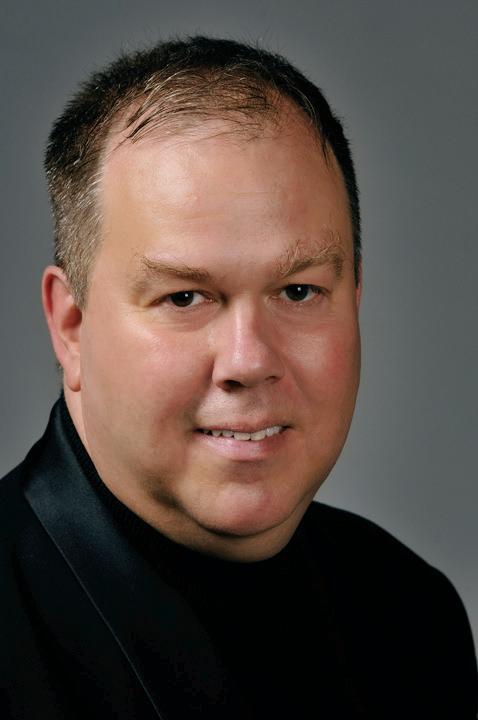
The Guild and the Symphony present “Adventure on the High C’s,” a Sunday afternoon children’s concert in March.
The Symphony performs Beethoven’s Ninth Symphony for the first time with choruses from Western Carolina University, directed by James Dooley, Mars Hill College, directed by Joel Reed, and UNC Asheville, directed by Dewitt Tipton.

The Symphony’s 27th Season introduces four “Matinees Musicales,” chamber concerts in addition to the six Masterworks concerts at Thomas Wolfe Auditorium; the matinees are held at the Walker Arts Center, Asheville School, with the Symphony’s String Quartet, Woodwind Quintet and Brass Quintet; two weeks prior to the October opening concert, the Symphony offers a free open rehearsal during “Asheville Symphony Month.”
Pianist Christopher O’Riley is guest soloist with the Symphony in November for Rachmaninoff’s Piano Concerto No. 3.
The Asheville Junior Symphony, in its fifth year as a full orchestra, changes its name to the Asheville Symphony Youth Orchestra, under the direction of Sidney Baker, the Symphony’s principal cellist.
The Guild produces “Pops Downtown” in June with the Symphony and guest artist Tony Bennett at the Asheville Civic Center.

The Guild and the Symphony present “Sounds of the Super Heroes,” a Sunday afternoon children’s concert in February.
The Symphony sponsors violinist Itzhak Perlman in recital on March 4, 1989, during its 28th Season.

Pianist Misha Dichter performs Beethoven’s Piano Concerto No. 4 with the Symphony in October during its 29th Season.
Philip Messner becomes seventh general manager, serves until 1991.
The Asheville Symphony Chamber Orchestra begins a concert series at the Walker Arts Center at the Asheville School which continues through 1991.

The Symphony sponsors violinist Itzhak Perlman in an encore recital featuring an all-new program on May 15, 1990.
The Symphony opens its 30th Anniversary Season on September 22 with a Masterworks concert featuring pianist Leonard Pennario performing Khachaturian’s Concerto for Piano and Orchestra; Robert Hart Baker, in his 10th year in Asheville, conducts the Asheville Symphony Chamber Orchestra, with 26 players, in a Sunday matinee performance on September 30 at the Walker Arts Center, Asheville School.
1991
Margaret Gormley becomes the eighth general manager and serves until 1996.
The Guild sponsors “An Afternoon with Disney,” a children’s concert in February.

The Symphony sponsors soprano Leontyne Price in a recital on April 27.
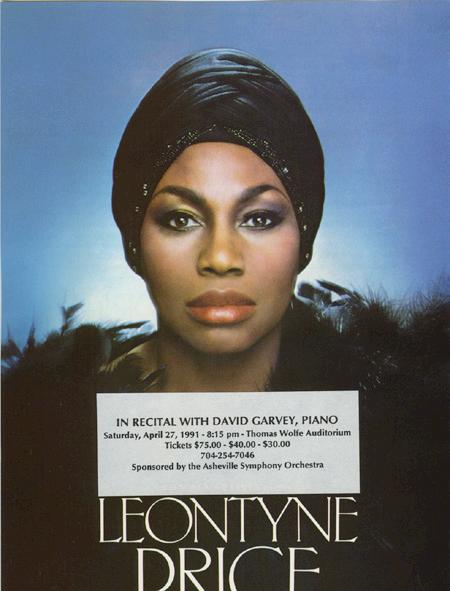
Edvard Tchivzhel, formerly music director and principal conductor of the Karelian Symphony Orchestra of National Television and Radio in the U.S.S.R., is guest conductor for the Symphony’s performance of Tchaikovsky’s Symphony No. 4. in November.
The Guild and the Symphony present “Talk to the Animals,” a Sunday afternoon children’s concert in February.
The Symphony opens its 33rd Season with a free mid-day, pre-Labor Day “Pops in the Park” concert at City/ County Plaza on Sunday, September 5; a new family series of Sunday Matinees begins in October, followed by a second matinee in March 1994; a special Halloween Concert is also held in October at the Diana Wortham Theatre.
The Symphony closes its 36th Season in May with “A Tribute to the Boston Pops” in the Asheville Civic Center Arena; after intermission, guest artist Shirley Jones performs “An Evening with Shirley Jones,” a selection of songs by Rodgers and Hammerstein, Meredith Wilson and others, accompanied by her pianist Dan Micheli, with area musicians Byron Hedgepeth on drums and Ian Bracchitta on bass.
Alice Jolley becomes the Symphony’s ninth manager with new title of executive director and serves one season.
Steven R. Hageman becomes the Symphony’s tenth manager and second executive director and continues to serve; the Symphony’s first website goes online in May.

At the end of the 30th Season in the spring and before the beginning of the 31st Season in the fall, the Symphony Board initiates a “Community Awareness” program, informally known as “Save Our Symphony,” to tackle a $100,000 debt that had accumulated over several seasons; by the end of the 31st Season in 1992, most of the debt has been erased.
Robert Hart Baker begins his second decade as music director and conductor at the beginning of the 31st Season; a free “Pops in the Park” concert on September 1 raises $4,154 in donations and sales of box lunches, T-shirts, drinks and season subscriptions, bringing the emergency fund-raising total to approximately $63,000.

The 33rd Season’s next-tolast concert is the “Maestro’s Birthday Bash,” celebrating the 40th birthday of Robert Hart Baker; pianist Eugene Istomin plays Mozart’s Piano Concert No. 21 (“Elvira Madigan”); the season concludes with “A Sonic Spectacular” that includes Carl Orff’s Carmina Burana with the Asheville Symphony Chorus.
The Asheville Symphony Youth Orchestra becomes the Asheville-Buncombe Youth Orchestra, a separate organization, under the direction of Ron Clearfield, the Symphony’s principal cellist.
Dewitt Tipton begins a new Asheville Symphony Chorus, which sings an all-Mozart program in its first concert in November at First Presbyterian Church and performs at the Symphony’s Holiday Pops Concert in December.

Annual “Pops in the Parks” Labor Day concerts, begun in 1991, are discontinued as an annual event.
The Symphony performs a Labor Day Pops Concert, “Sports Trivia,” in City County Plaza, the first since 1993 and the last until 2010.
For its 37th Season, the Symphony celebrates Asheville’s 200th Anniversary with concerts that include Symphony No. 1 by Caryl Florio, resident composer at the Biltmore House, as a tribute to the importance the Vanderbilts placed on music, Bartok’s Rumanian Folk Dances and selections from Lamar Stringfield’s From the Southern Mountains Suite and The Blue Ridge; the program notes Stringfield’s role as the founder of the first Asheville Symphony.
The Asheville Symphony Children’s Chorus forms under the direction of Susan Hensley, arts education supervisor for the Buncombe County Schools.

The Symphony’s 38th Season features as guest artists a combination of “rising stars” and “grand masters”; among the rising stars are pianist Alan Gampel, who three years earlier, at age 30, had won the Chopin Prize at the Artur Rubinstein International Piano Competition in Israel, and Russian-born violinist Philip Quint, who had made his American debut at Avery Fisher Hall in New York three years prior; Gampel performs Mozart’s Piano Concert in C Minor in September; Quint performs Lalo’s Symphonie Espagnole for Violin and Orchestra in October; among the grand masters are trumpeter Stephen Burns, making a return appearance, who performs Hummel’s Trumpet Concerto in E Major in November, and pianist Dimitri Ratser, also making a return appearance, who performs Rachmaninoff’s Rhapsody on a Theme of Paganini in April 1999, completing a Rachmaninoff cycle with the Symphony.
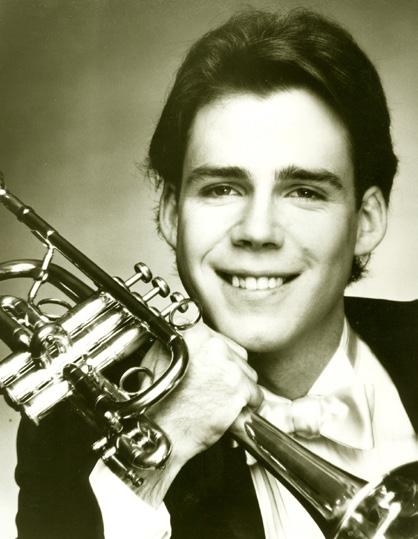
The Symphony partners with the Asheville Lyric Opera to produce Puccini’s La Bohème at Thomas Wolfe Auditorium in January, the first full production of the new opera company.
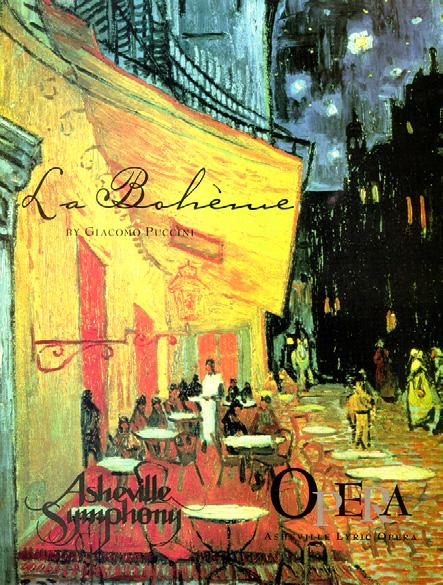
During the Symphony’s 39th season, violinist Philip Quint makes a return engagement to play Paganini’s Violin Concerto No. 1 in D Major in February.
The Symphony partners with the Asheville Lyric Opera to produce Gilbert and Sullivan’s The Pirates of Penzance in Thomas Wolfe Auditorium in May.

The Symphony completes its 42nd Season in April and announces that the 43rd season, beginning in September, will be Robert Hart Baker’s final season as music director and conductor; the Board begins a two-year search to find Baker’s replacement; Henry Janiec, former music director and conductor of the Brevard Music Center, joins the Symphony as adviser to assist in planning programs for the 2004-2005 season.
The Symphony’s 43rd Season begins in September with a concert directed by Guest Conductor Enrique Barrios, music director of the Mexican National Opera Company; the season’s second concert in October is directed by guest conductor Milen Nachev, formerly principal conductor of the Bulgarian National Radio Symphony Orchestra in Sofia; the third concert in November is conducted by George Del Gobbo, music director of the Columbus (Georgia) Symphony Orchestra.
The Asheville Symphony Children’s Chorus makes its debut at the annual Holiday Pops Concert in December.
The Symphony concludes its 38th Season with “A Night at the Oscars,” a Pops Concert in May, with the Asheville Symphony Children’s Chorus and a special guest appearance by actress (and Asheville resident) Andie MacDowell.
The Symphony’s 39th season includes Peter Maxwell Davies’ Mavis in Las Vegas: Theme and Variations for Orchestra (1997) in October; guest artists include pianist Oleg Marshev in November.
On December 31, 1999, the Asheville Symphony Chamber Orchestra performs a Millennium New Year’s Eve concert at the skating rink of the Asheville Civic Center; the audience welcomes the year 2000 skating to waltzes by Johann Strauss, Jr.

Robert Hart Baker becomes ill with pancreatitis in Baltimore in April; Assistant Conductor Leonora Thom conducts final concert of the season, a “Choral Spectacular,” featuring bass-baritone John Cheek in William Walton’s “Belshazzar’s Feast” and the Asheville Symphony Chorus, the Asheville Symphony Children’s Chorus, the Asheville Choral Society and the UNCA Community Chorus; Sally Keeney, the Symphony’s artistic administrator, relays the performance over her cell phone to Robert Hart Baker’s hospital room.
Because of Robert Hart Baker’s illness, the 40th season opens in September under Guest Conductor David Bowden, music director of the Terre Haute Symphony Orchestra; Maurice Peress, a former music director of Kansas City Philharmonic, conducts the October concert; Paul Polivnick, music director of the Oberlin Conservatory Orchestras, conducts the November concert.
Robert Hart Baker returns for the February concert and the remainder of the 40th Season; the Symphony performs North Carolina composer Russell Peck’s Harmonic Rhythm, Timpani Concerto (2000), with Symphony principal timpanist Byron Hedgepeth as soloist in April.
The Symphony concludes its 43rd season with Robert Hart Baker conducting his final concert in April; Baker is named Conductor Laureate from the stage by board president James Topp; the Asheville Citizen-Times reports, “He leaves an orchestra that he has developed into a fine professional organization. He has given all subscribers to the ASO’s concert seasons the best of his considerable musical skills in producing an orchestra which at the start of every concert season has revealed more ability and more musicianship than it showed in the previous years.”
The Symphony begins its 44th Season with three concerts conducted by candidates for the position of music director; Daniel Meyer, resident conductor of the Pittsburgh Symphony Orchestra and music director of the Pittsburgh Symphony Youth Orchestra, directs in September, with violinist Nicolas Kendall performing Sibelius’ Violin Concerto in D Minor; Alexander Mickelthwate, assistant conductor of the Atlanta Symphony, directs in October, with pianist Jonathan Biss performing Mendelssohn’s Piano Concert No. 2; Timothy Hankewich, a resident conductor of the Kansas City Symphony, directs in November, with soprano Rachel Holland performing Strauss’s Four Last Songs for Soprano and Orchestra.
The Symphony names Daniel Meyer as its new conductor and music director in December.
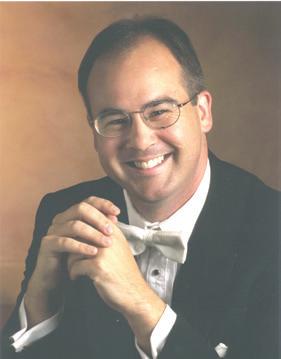
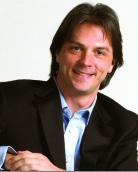

The Symphony opens its 46th Season in September with “Celebrating Black Mountain College,” featuring a performance of Lou Harrison’s orchestra version of John Cage’s Suite for Toy Piano, which premiered at Black Mountain College in 1948.

Music Director Daniel Meyer begins adding contemporary and new music to Symphony concerts, including Lucas Richman’s Concerto for Percussion and Orchestra: The Healer, performed by percussionist Timothy Adams Jr, for whom the piece was written, in November.

In conjunction with the March performance of Richard Danielpour’s Pastime, a song-cycle for baritone and orchestra paying tribute to the Negro Baseball League and three of its players, John Gibson, Hank Aaron and Jackie Robinson, the Symphony sponsors a “community collaboration” called “Spring Training: Baseball in Black and White”; the week-long event features a youth poetry contest, a performance by spoken word artists, a poetry and dance event and an improvisational theatre evening; collaborators are Asheville City Schools, Asheville Tourists, Lake Eden Arts Festival, UNC Asheville, WCQS, YMI Cultural Center, W.C Reid Center of the City of Asheville Parks, Recreation and Cultural Arts Department, Stephens-Lee Alumni Association and Asheville Playback Theatre.

The Symphony’s 44th Season continues with two concerts by guest conductors, Israel Getzov, assistant conductor for the Arkansas Symphony Orchestra, in February, and David Bowden, music director of the Terre Haute Symphony Orchestra, in March; Daniel Meyer returns in April to conduct Orff’s Carmina Burana, with the Asheville Symphony Chorus, the Western Carolina University Concert Choir and the Western Carolina Community Chorus.
The Symphony’s 45th Season, its first full season under Daniel Meyer, opens in September; violinist Nicolas Kendall, who played during Daniel Meyer’s audition concert the previous season, returns to perform Vivaldi’s Concerto for Violin; other young rising stars who appear as guest artists during the first half of the season are violinist Jennifer Orchard and cellist Mikhail Istomin in October; and pianist Berenika Zakrzewski, who uses “Berenika” as her professional name, in November.
With the 46th Season, the Symphony expands its subscription series to seven concerts; the season also includes a Holiday Pops in December, conducted for the first time by Daniel Meyer, with a matinee and evening performance, and two concerts by the Asheville Symphony Chorus.
The Symphony opens its 47th Season in September with a concert that includes Christopher Theofanidis’s Rainbow Body (2000); other contemporary works during the season include William Jackson’s Fantasia on Scottish Themes (2007) in October, performed by the composer, a native of Scotland and an Asheville resident; John Adams’s “The Chairman Dances” from Nixon in China (1985); and Richard Danielpour’s Pastime (2006) in March 2008.

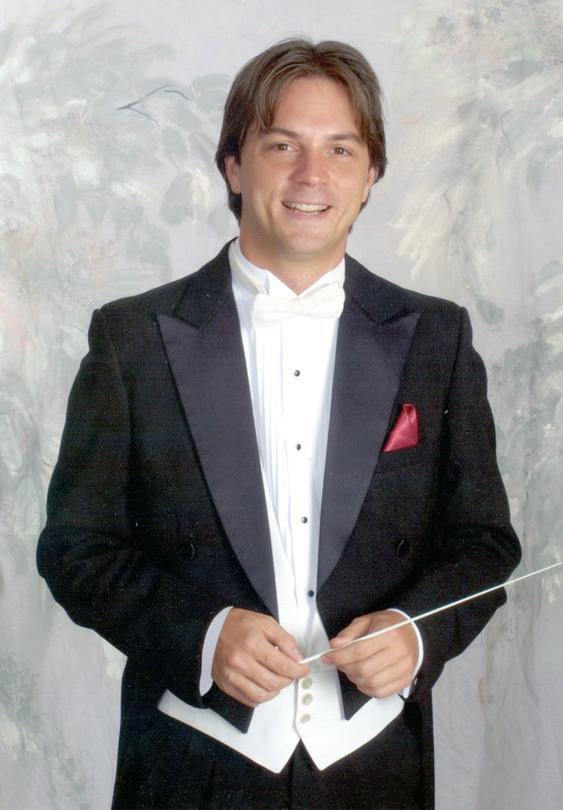
The 47th Season features “rising star” guest artists including violinist Jennifer Frautschi in September, cellist Zuill Bailey in November, baritone Gregg Baker in March 2008 and soprano Sarah Elizabeth Wolfson and baritone Craig Verm in April 2008.
The 47th Season closes with a May concert performing Stravinsky’s Petrushka, featuring the Red Herring Puppets of Asheville.

The 48th season opens in September with a concert featuring Alexander Arutunian’s Trumpet Concerto (1950); other mid-to-late 20th century music includes David Diamond’s Music for Romeo and Juliet (1947) in February 2009, Bohuslav Martinů’s Concerto for Oboe and Orchestra (1959) in March and David Stock’s Percussion Concerto (2007, 2008) in April; young guest artists for the season include trumpeter Vladislav Lavrik, pianist Michael Boriskin, violinist Chad Hoopes, pianist Angela Cheng, oboist Alicia Chapman and percussionist Lisa Pegher.
The 49th Season includes Arvo Pärt’s Fratres (1977, 1983, 1991) in October and Joaquin Rodrigo’s Concierto de Aranjuez (1939) in May 2010; young guest artists include cellist Zuill Bailey in a return engagement, violist Mary Persin, violinist (and Asheville native) Noah Bendix-Balgley, pianist Di Wu, violinist Caroline Goulding, pianist Antonio Pompa-Baldi and soprano Deborah Selig.



The 48th Season concluding concert includes a performance of Manuel de Falla’s El Amor Brujo, with mezzo-soprano Blythe Gaissert and dancebased Attack Theatre of Pittsburgh

In February the Symphony purchases a Steinway Concert Grand piano, with funds from a challenge grant from Eleanor Hall and contributions from, among others, the Guild, the Asheville Symphony Chorus, Asheville Bravo Concerts, the Asheville Area Piano Forum and Symphony musicians.
The Asheville Symphony opens its 50th anniversary Season with “Symphony in the Park,” a free Labor Day concert in Pack Square Park, sponsored jointly with the Pack Square Conservancy, and supported by the Chaddick Foundation; Asheville City Councilwoman Esther Manheimer presents Symphony Executive Director Steven Hageman with a proclamation designating 20102011 “Symphony Year” in Asheville; the Pack Square Conservancy estimates the audience at over 5,000; the Asheville Citizen-Times reports, “Before the first notes were played, a review was already in for the Asheville Symphony’s Labor Day performance at Pack Square Park: There should be more free, outdoor concerts like this one. The sentiment echoed through the crowd of thousands gathered to celebrate the end of the holiday weekend with the show kicking off the symphony’s 50th anniversary season.”







1927-1929 Lamar Stringfield, founding conductor 1955-1958 Sol B. Cohen 1959-1961 Richard Renfro 1961-1963 M. Thomas Cousins 1963-1964 Albert Chaffoo, 1st resident conductor 1963-1976 Joseph E. Fischer 1976-1981 Robert B. Welch 1981-2004 Robert Hart Baker, 1st full-time resident conductor and music director 2004- Daniel Meyer
Concertmasters

1956-1958, 1967-1975 Frank Rutland 1959-1962, 1963-1967 Sydney vom Lehn 1962-1963 John Eversman 1975-1982 Ralph L Congdon 1982-2007 Mary Byrd Daniels 2007- Jason Posnock
1960 – 1976 Helen Sorton
Summer, Fall 1976 Patricia Berlet Fall 1976 – 1979 Jane B. McNeil
1979 – 1982 Randall Rosenbaum
1982 – 1986 Ellen Sandweiss-Hodges
1986 – 1989 Marcia Dean Onieal
1989 – 1991 Philip Messner
1991 – 1996 Margaret Gormley
1996 – 1997 Alice Jolley (1st Executive Director)
1997 – present Steven R. Hageman (2nd Executive Director)
1962-1964 Gaylord Davis 1964-1966 Rudolf Gumpert 1966-1968 John W. Rutland
1968-1970 Robert K. Weiler 1970-1971 Robert Saenger 1971-1972 William C. Spencer, Jr. 1972-1975 John K. Knight
1975-1977 Lawrence D. Ford 1977-1979 Mortimer Ryon 1979-1982 James E. Dooley
1982-1984 J.K. MacKendree Day 1984-1985 George Saenger 1985-1987 Spencer Atwater, MD.
1965-1966 Mrs. William A.V. Cecil, Mrs. Lewis Lunsford, founding co-chairs 1966-1967 Mrs. Lewis Lunsford
1967-1968 Mrs. W. Rowe Fesperman, Jr. 1968-1969 Mrs. Charles R. Kern 1969-1970 Mrs. George W. Beverly, Jr. 1970-1971 Mrs. William C. Moore
1971-1972 Mrs. Robert Moffatt
1972-1973 Mrs. Lee Storey
1973-1974 Mrs. R. C. Rich
1974-1975 Mrs. Sidney A. Hughes
1975-1976 Mrs. Ralph R. Woodiwiss
1976-1977 Mrs. Robert Turner
1977-1978 Mrs. Carl B. Sohns
1978-1979 Mrs. Robert Clarke
1979-1980 Mrs. Robert Polak
1980-1981 Mrs. Robert Fitch
1981-1982 Mrs. Aubrey Corner
1983-1984 Mrs. Robert D. Williams
1984-1985 Mrs. Barbara Baskerville
1985-1986 Mrs. Richard Gallagher
1986-1987 Mrs. Robert T. Miller
1987-1989 George Goosmann, III 1989-1992 John J. Sherman, Jr. 1992-1994 G. Edward Towson, II 1994-1995 Stephen L. Barden, III 1995-1997 Joyce R. Dorr, Ph.D. 1997-1999 C. David Pheil 1999-2001 George M. Bilbrey, MD. 2001-2003 W. Herbert Smith, Jr. 2003-2004 James P. Topp 2004-2006 Thomas C. Bolton 2006-2008 Carol McCollum 2008-2010 Jack Anderson 2010- Carolyn Hubbard 1987-1988 Mrs. Frederick Bloemeke 1988-1989 Mrs. Hugh McCollum 1989-1991 Ms. Margaret Gormley 1991-1992 Mrs. Charles Roudané 1992-1993 Mrs. David Cartner 1993-1994 Mrs. Dorrie Pratt 1994-1995 Mrs. Beth Stahl 1995-1996 Mrs. Sally Brig 1996-1997 Mrs. Doris Pless Hudgins 1997-1998 Mrs. Audrie F. LaTowsky 1998-1999 Mrs. Eve Burnette 1999-2000 Mr. and Mrs. Carl Saake 2000-2001 Mrs. Beverly Briedis 2001-2002 Mrs. Martzy Moss 2002-2003 Mr. William Roskind 2003-2004 Mrs. Barbara Chisolm 2004-2005 Mrs. Janice Orson 2005-2006 Mr. Peter Dallo 2006-2007 Ms. Barbara Stickle 2007-2008 Ms. Carolyn Hubbard 2008-2010 Ms. Patty Coleman


